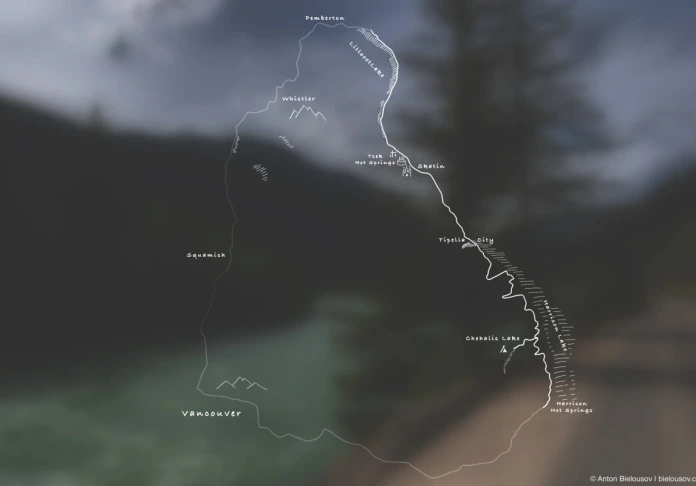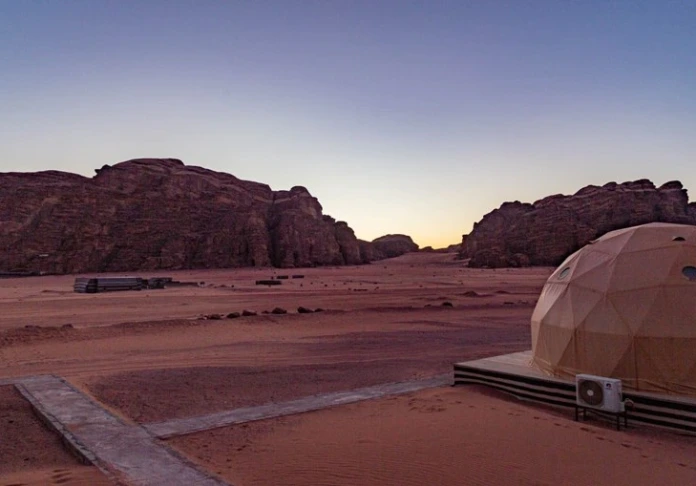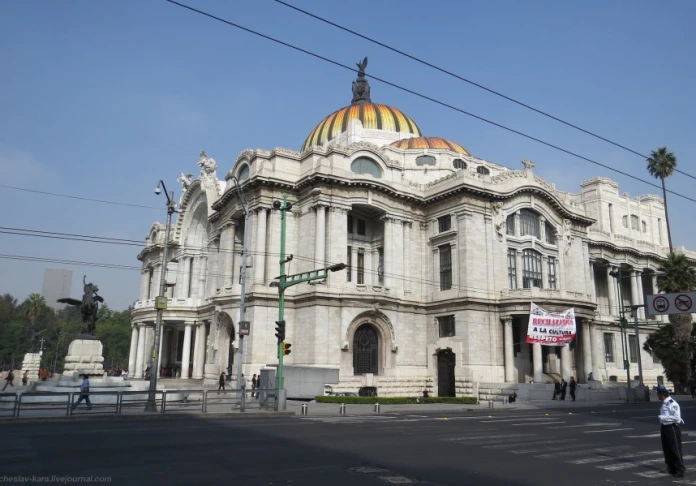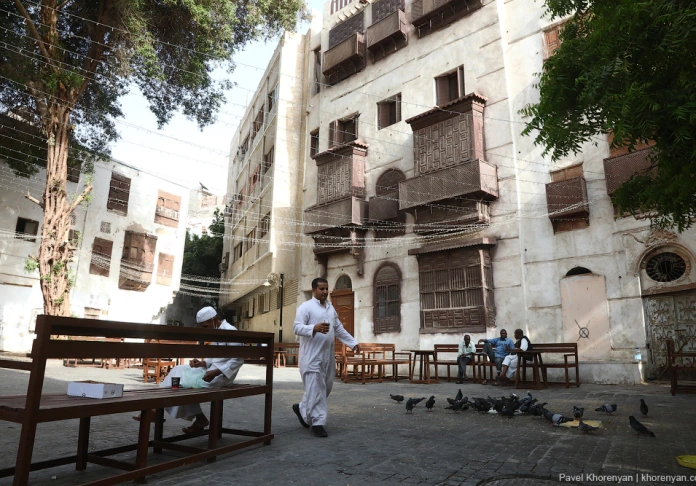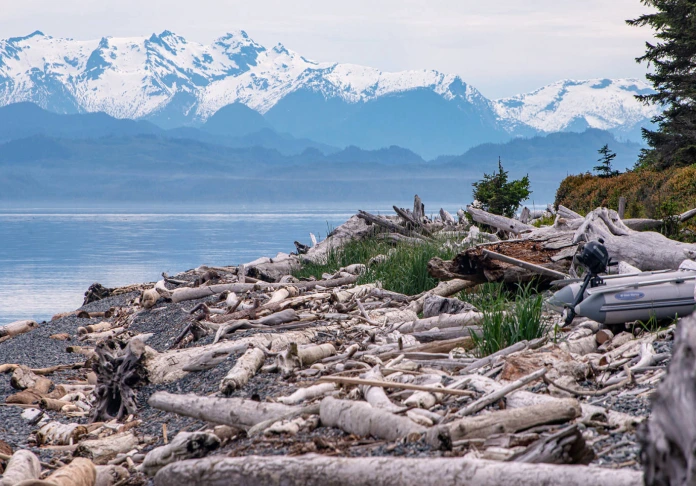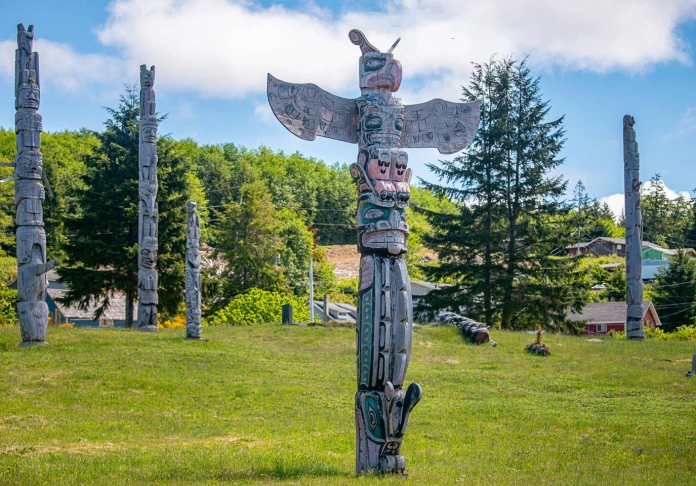The Dunes of Arrakis and the Martian Chronicles of the Wadi Rum Desert
Every desert, despite the general denominator (well, it’s a desert after all!), is unique and unrepeatable.

Each desert differs in climate, color and shape of the sand, vegetation, dune configurations, presence (or absence) of mountains and rocks, and, finally, simply its atmosphere.
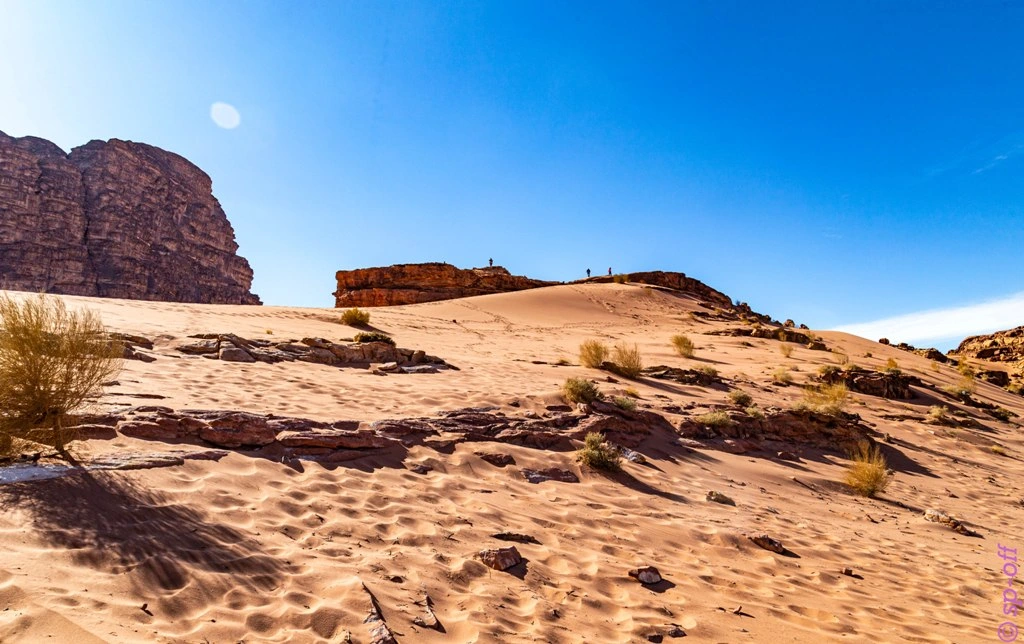
Wadi Rum (Arabic: وادي رم), also known as the «Valley of the Moon» — is a desert in Jordan, located 60 km east of the coastal cities of Aqaba and Eilat. It belongs to rocky deserts and covers an area of 74,180 hectares.
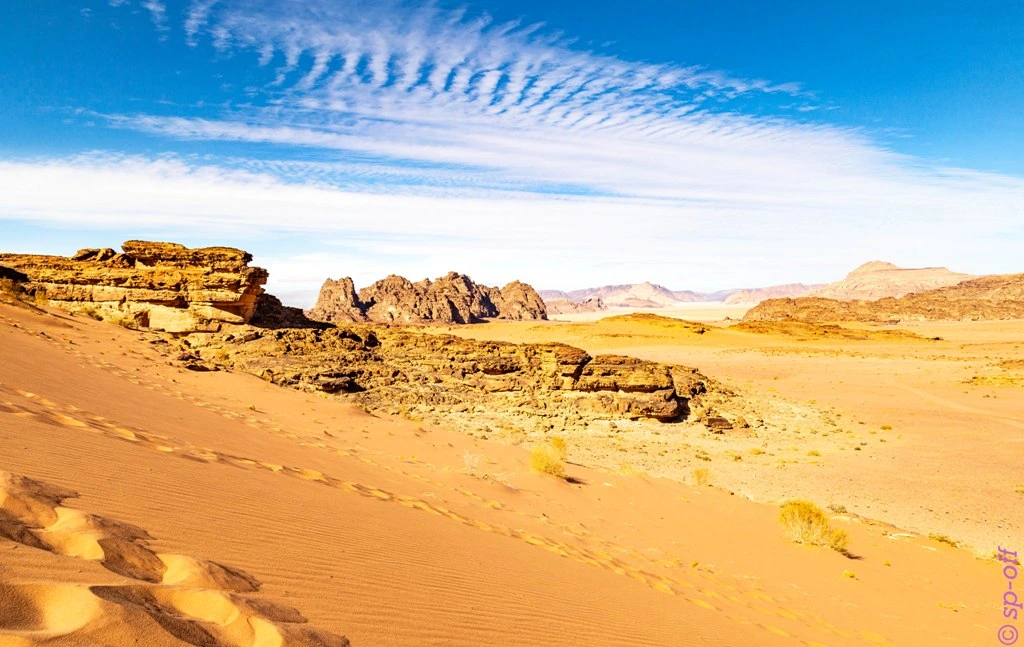
The road to Wadi Rum from the Red Sea coast takes less than an hour, the journey from Petra – 1.5 hours, and from Amman, Jordan’s capital,– 3.5 hours.
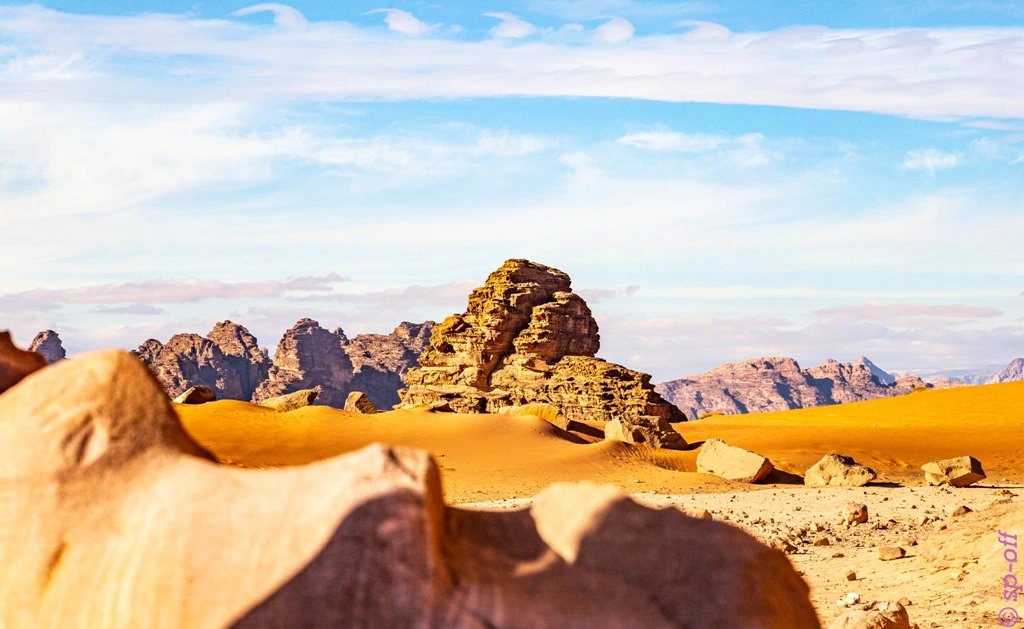
The atmosphere of a particular desert is what makes it photogenic and attractive, especially for filmmakers.
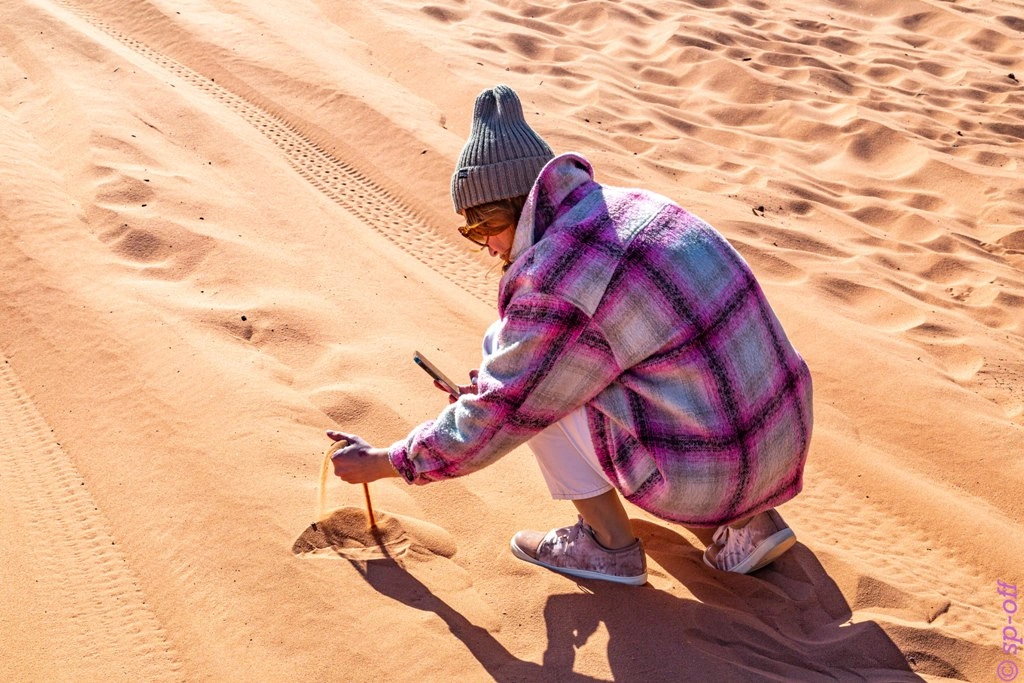
The «track record» of Wadi Rum is impressive. I would call its «calling card» the blockbuster by Ridley Scott, «The Martian» (2015) starring Matt Damon.

Even the camping, where we recovered after the emotional capture of a passenger train, and spent the next night, evokes associations with the Red Planet.
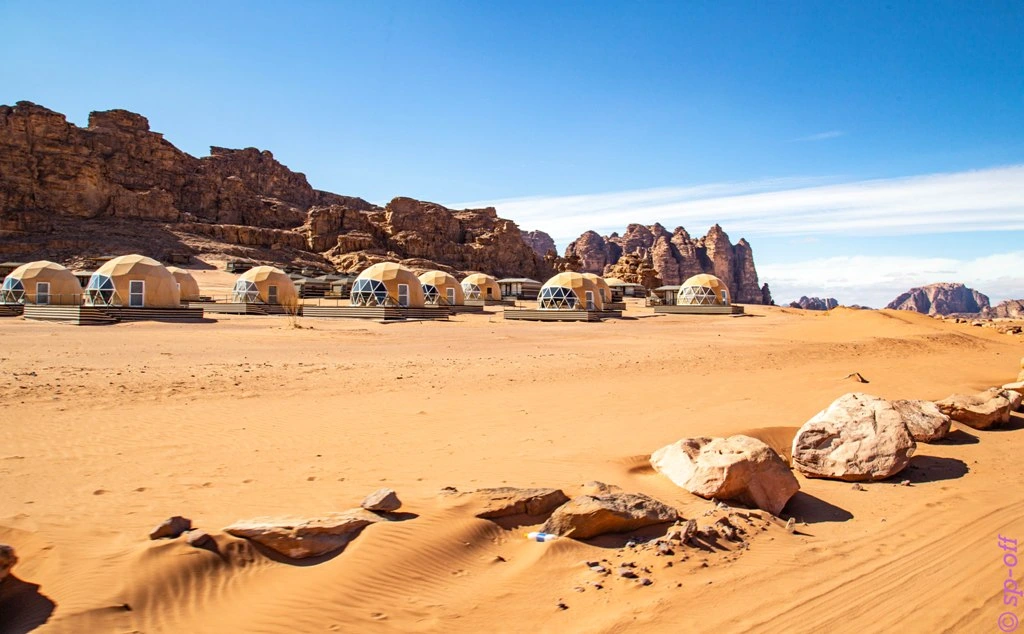
Ridley Scott, shortly before «The Martian», filmed the science fiction thriller «Prometheus» here in 2012.
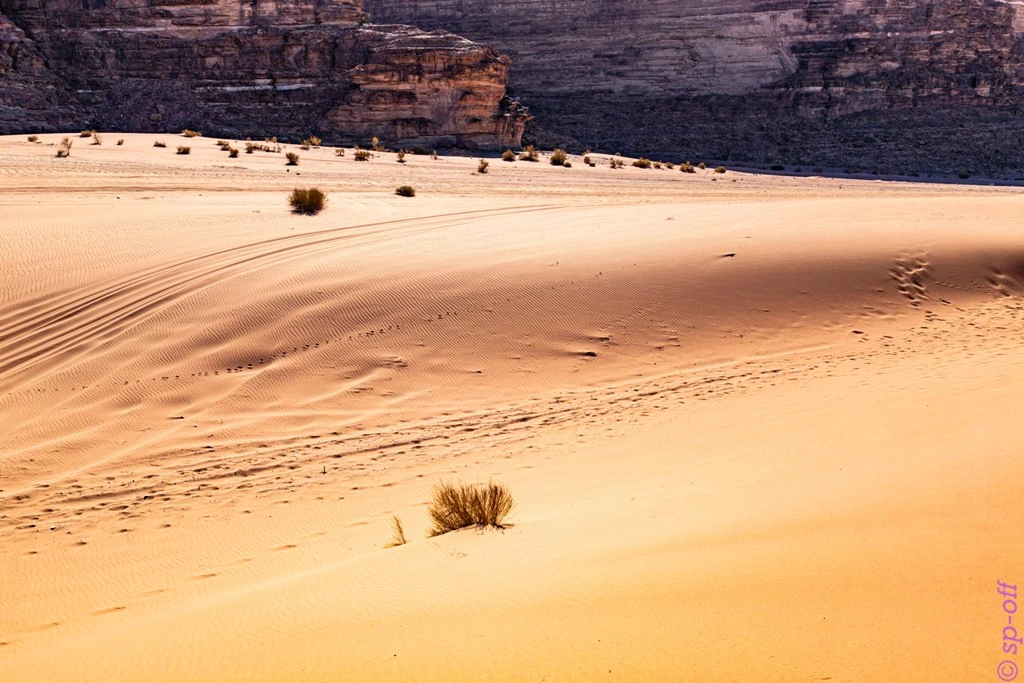
Additionally, the landscapes of Wadi Rum served as the backdrop for less popular science-fiction films, such as «Red Planet» (2000) by Antony Hoffman and «The Last Days on Mars» by director Ruairi Robinson (2013), as well as the completely unscientific remake of «Aladdin» (2019) by British director Guy Ritchie.
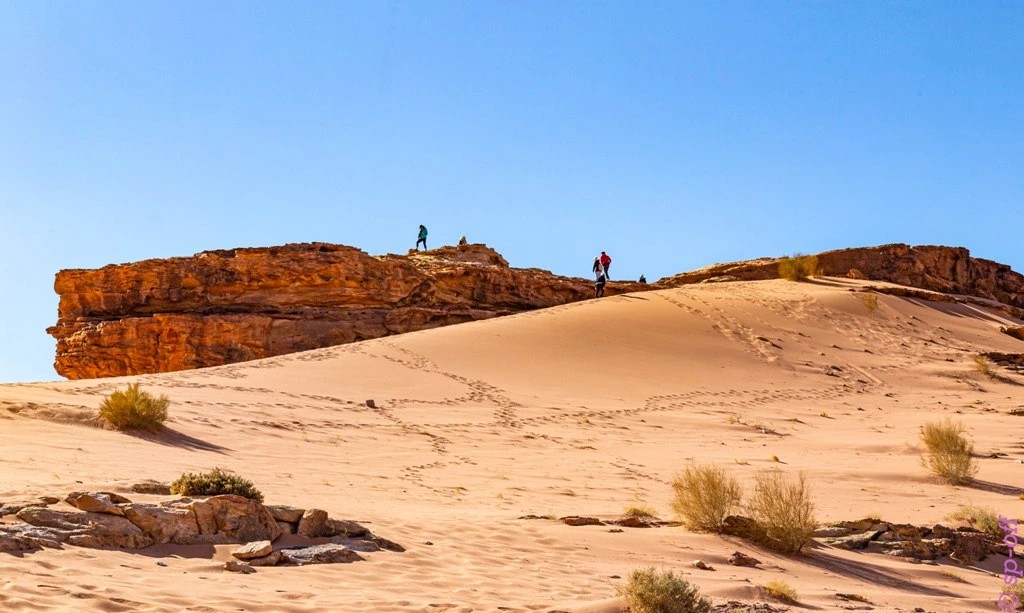
Jordanians love to mention that «Star Wars» was filmed in Wadi Rum.
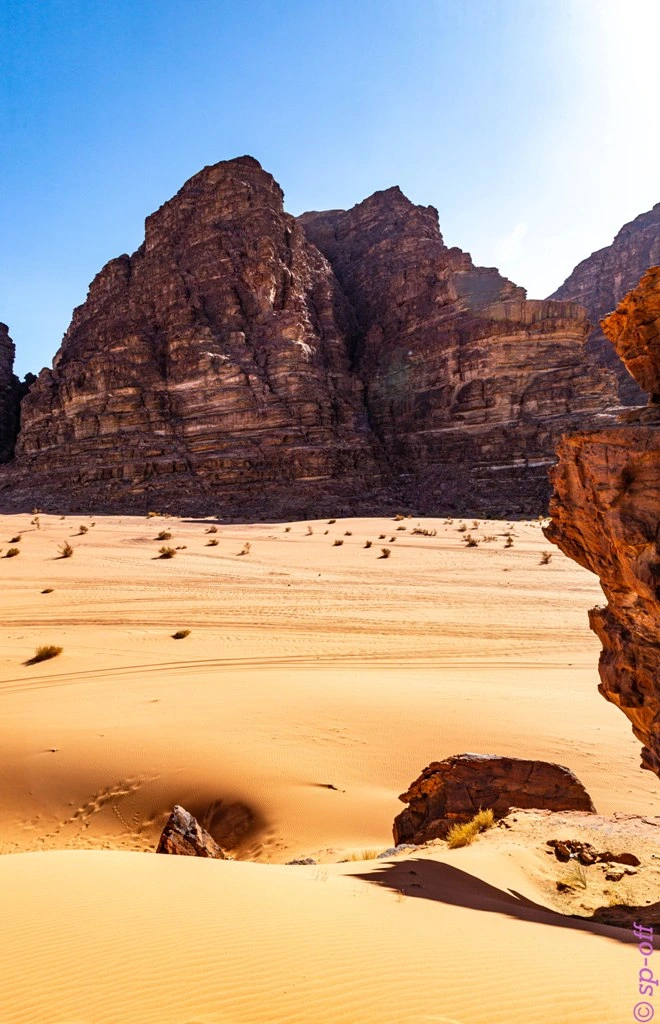
It’s true, but as a rule, they forget to clarify that the late episodes of Star Wars were filmed in Jordan - «Episode IX: The Rise of Skywalker» by J.J. Abrams and «Rogue One» (2016) by director Gareth Edwards.
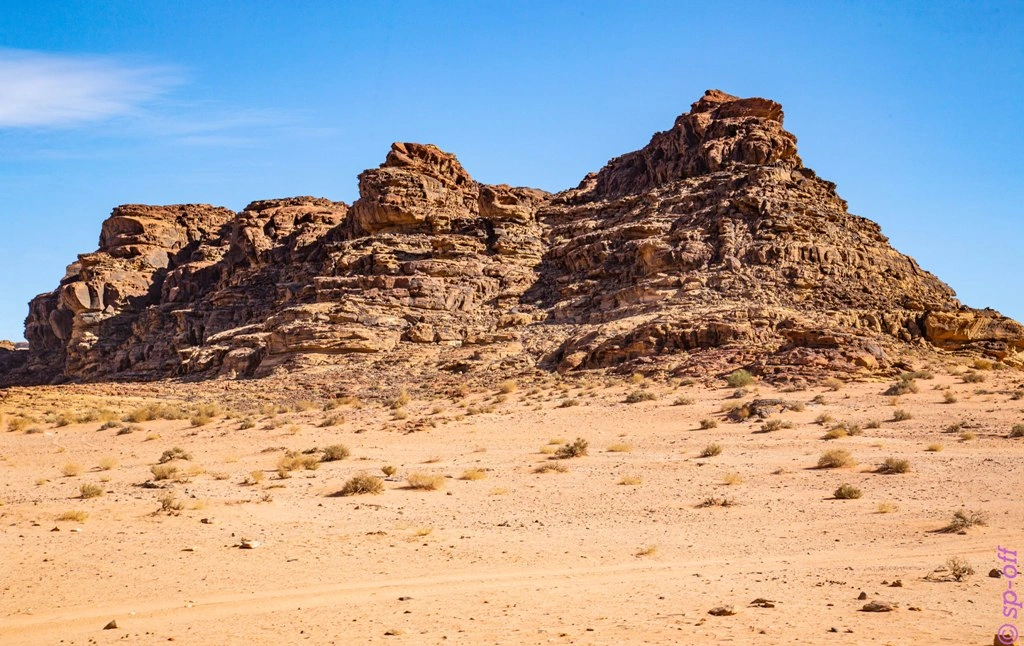
The classic «Star Wars» (Episode IV.) from 1977 was filmed in Tunisia, in the Sahara Desert.
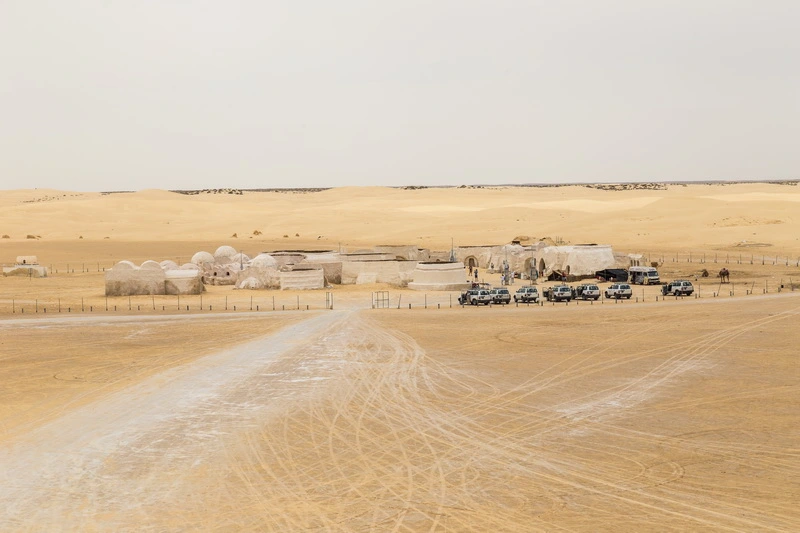
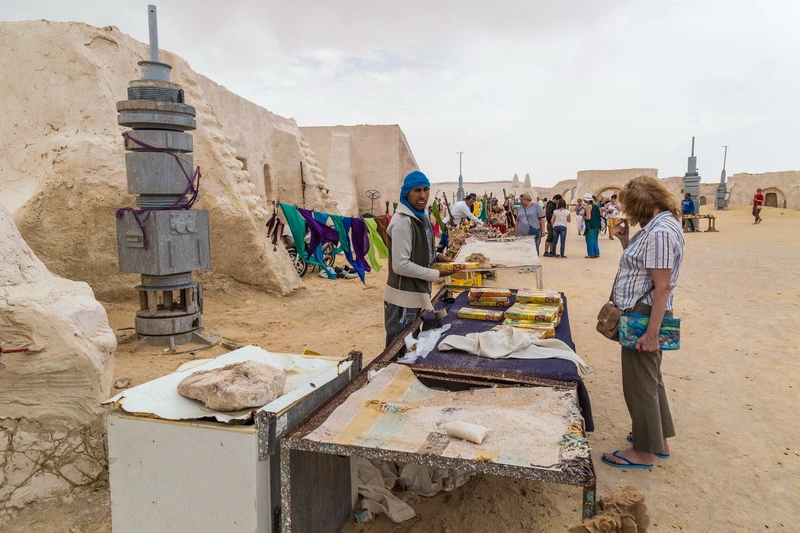
There still remains, though in a rather dilapidated state, the «city» of the planet Tatooine, where Luke Skywalker’s childhood took place.
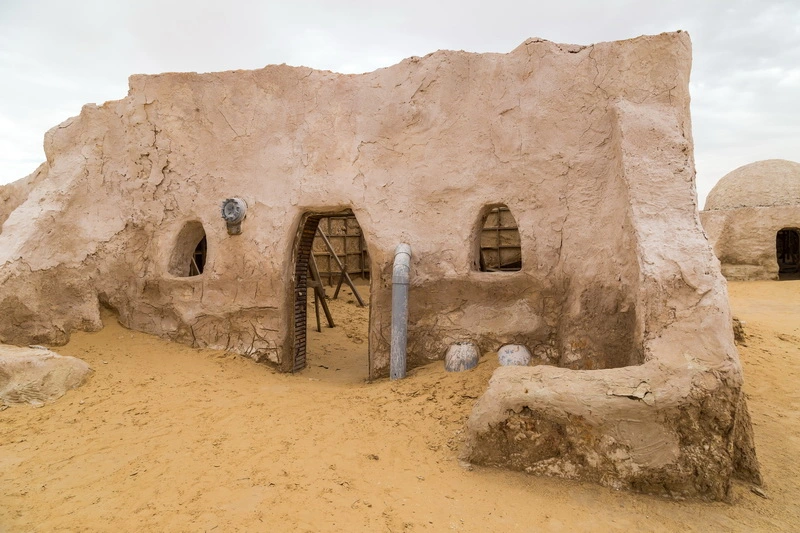
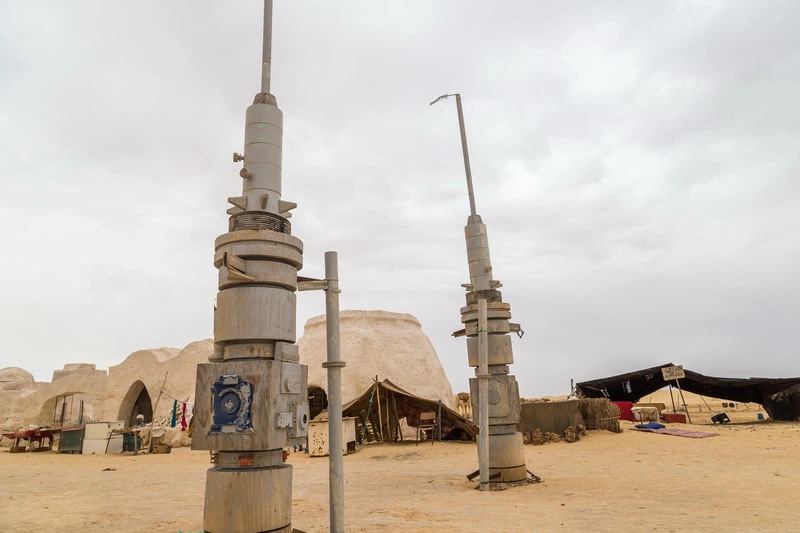
It is gladly shown to tourists, and visitors are driven around on jeeps over high dunes.

We were driven around the desert too.
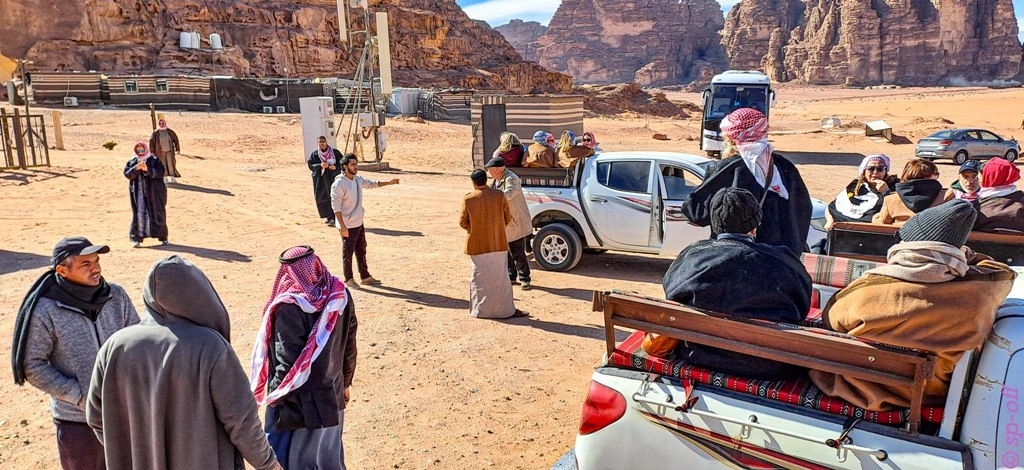
But considering the landscape of Wadi Rum, don’t expect the thrilling stunts like those in the Sahara in Jordan!

Wadi Rum is often referred to as a «valley,» forgetting that its territory is located at an altitude of 900 meters above sea level.
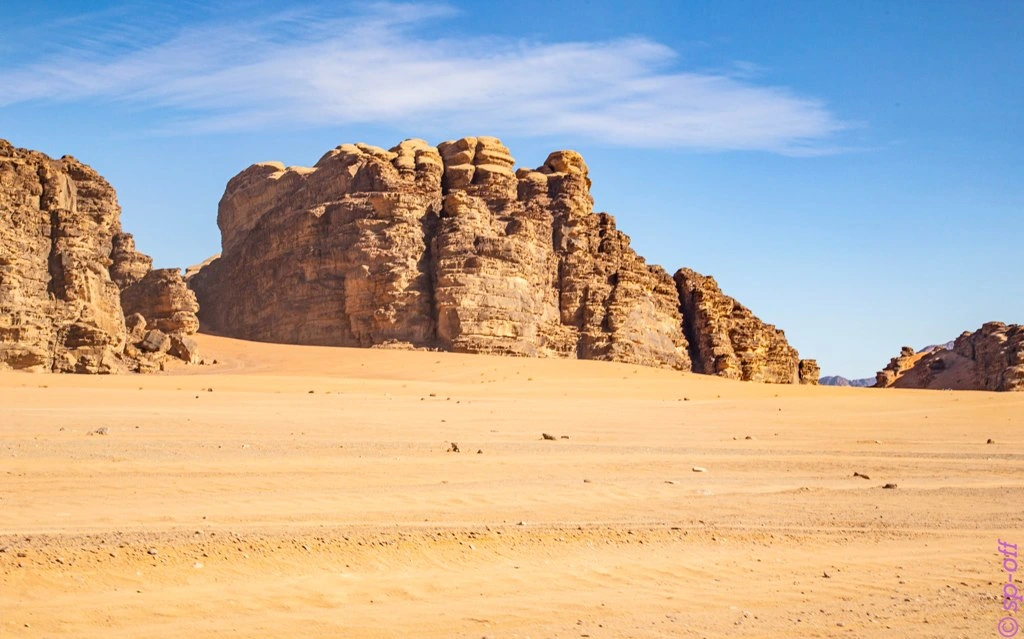
This means that geologically, Wadi Rum is a granite plateau, with sandstone cliffs towering over it. The highest of them are Umm ad-Dami (1830 m) and Jebel Rum (1754 m).
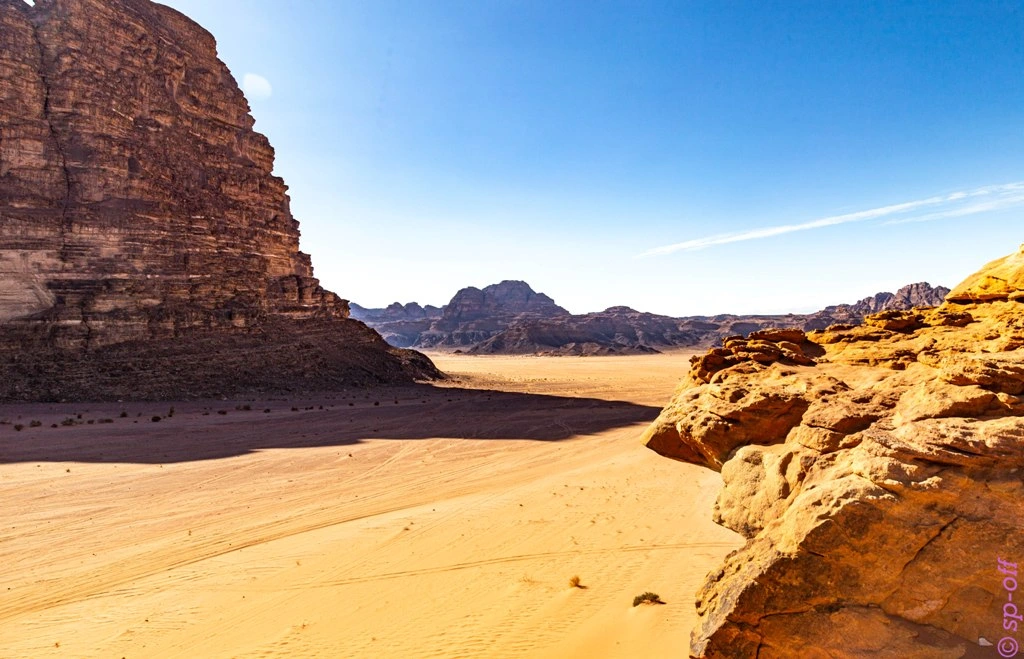
The plateau itself is Precambrian granite, aged 2 billion years. The colored layers of sandstone cliffs tell the entire geological history of the region: red — Cambrian, pale gray — Ordovician, whitish — Silurian.

Tectonic forces, which began forming the Great Rift Valley in Africa about 30 million years ago, also created Wadi Rum. Powerful upheavals literally «shook» layers of sandstone and granite and folded them into giant curved formations.

Geological processes continue today. Wind erosion and the breakdown of collapsed blocks of sandstone produce a vast amount of sand, which covers the bottom of Wadi Rum valley and climbs dunes up the cliffs.
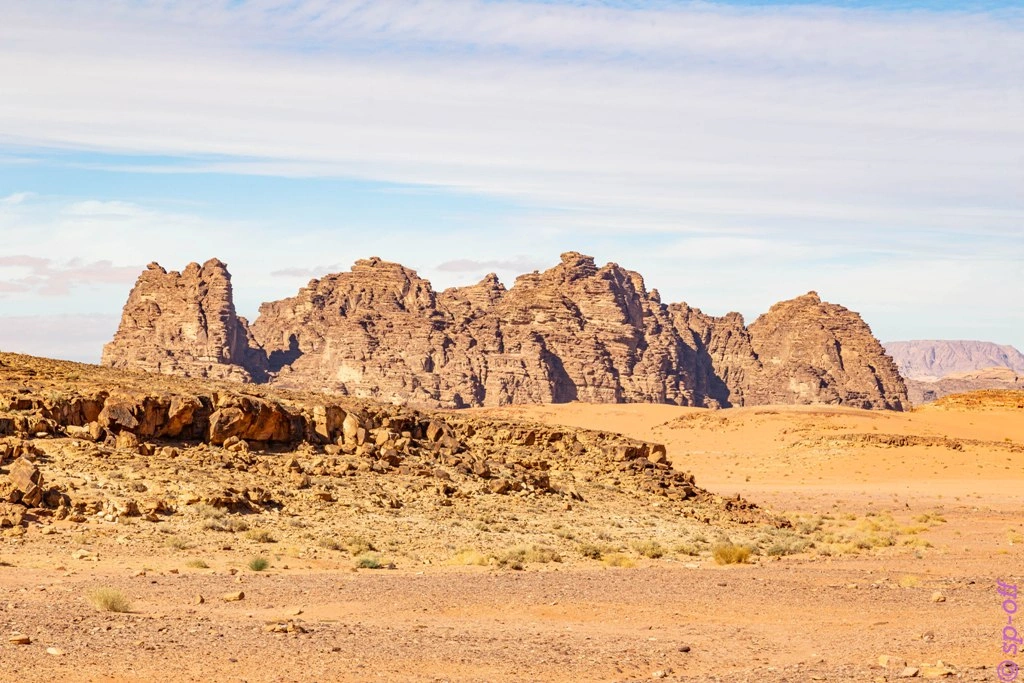
The sand stings painfully against your face when you rush through the desert in a jeep at high speed.

Sunglasses not only save you from the sun but also protect your eyes from flying fine sand. Washing it off your skin usually takes several days.

The desert climate is dry. Air temperatures in Wadi Rum range from 32 degrees Celsius during the day to 4 degrees at night.
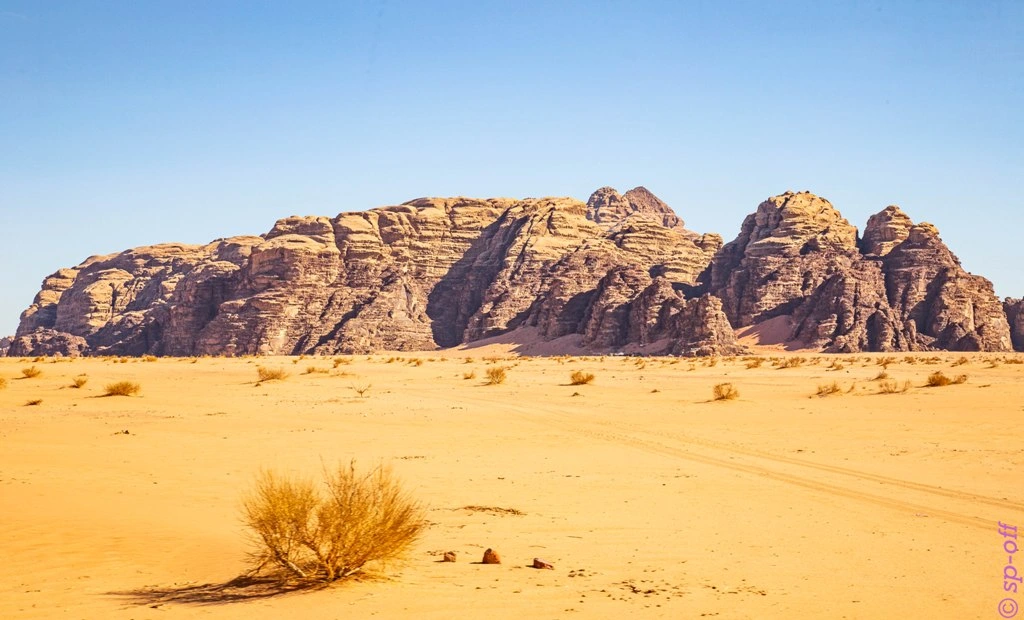
Wadi — the Arabic term for valleys or streambeds that are dry or have seasonal watercourses. Wadis fill with water only after heavy rains. These formations are widespread in the deserts of the Arabian Peninsula and North Africa.
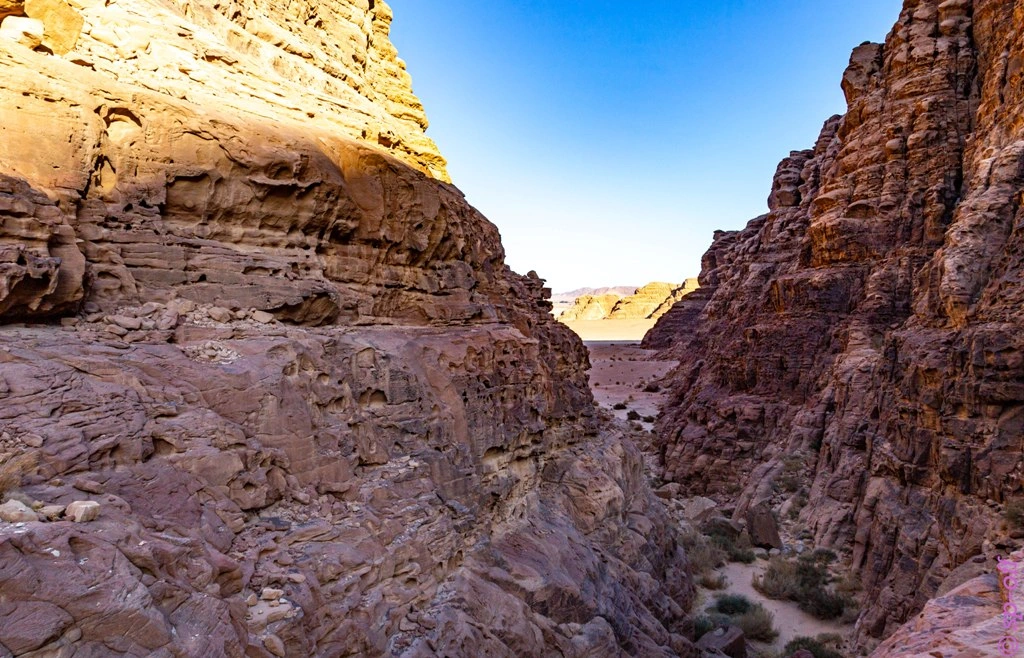
Occasionally stretching hundreds of kilometers in length, wadis usually end in closed basins.
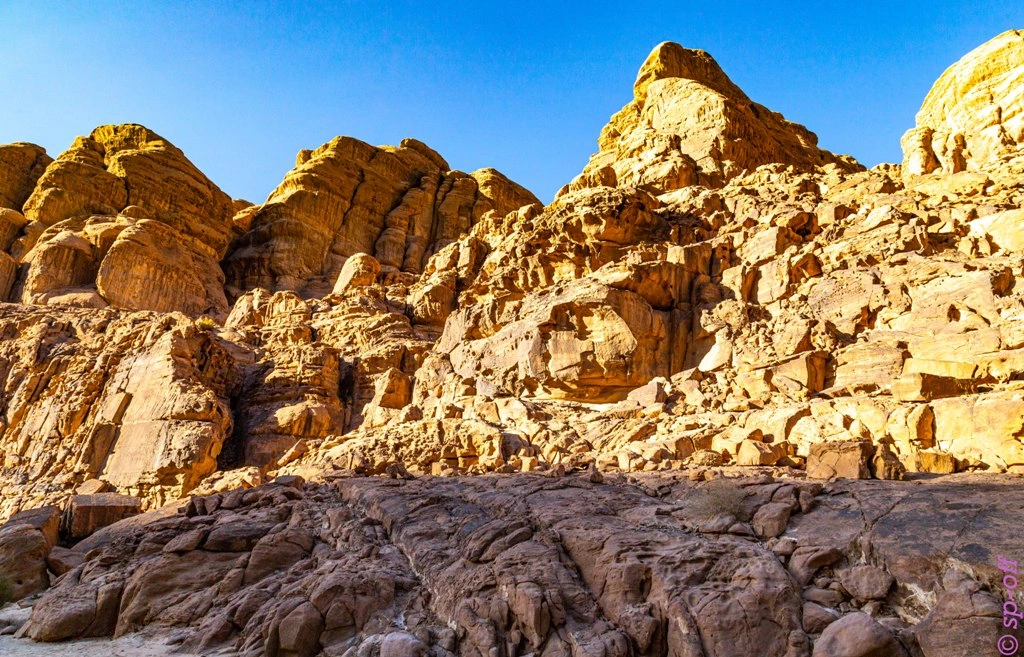
Wadi Rum is often called the «Valley of the Moon.»
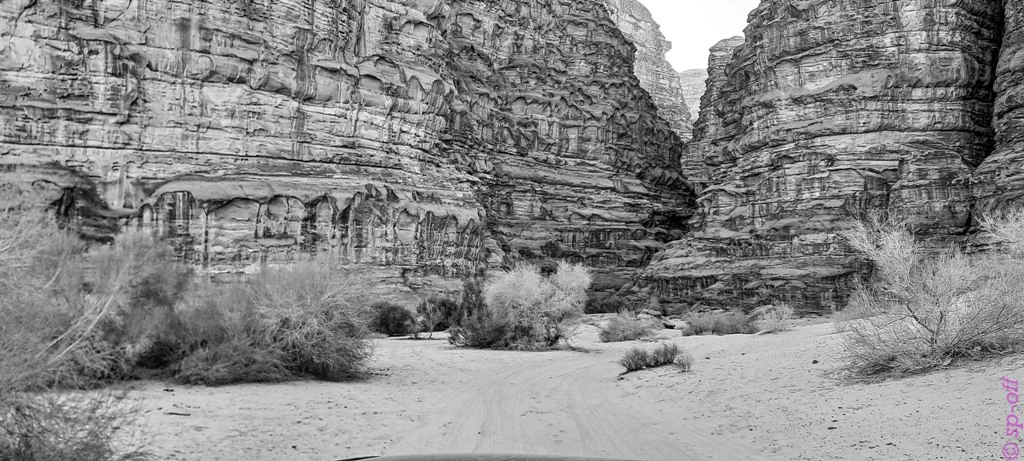
This name has an author — James Irwin. James was one of the astronauts who walked on the Moon. Upon seeing Wadi Rum, James told His Majesty King Hussein of Jordan: «».
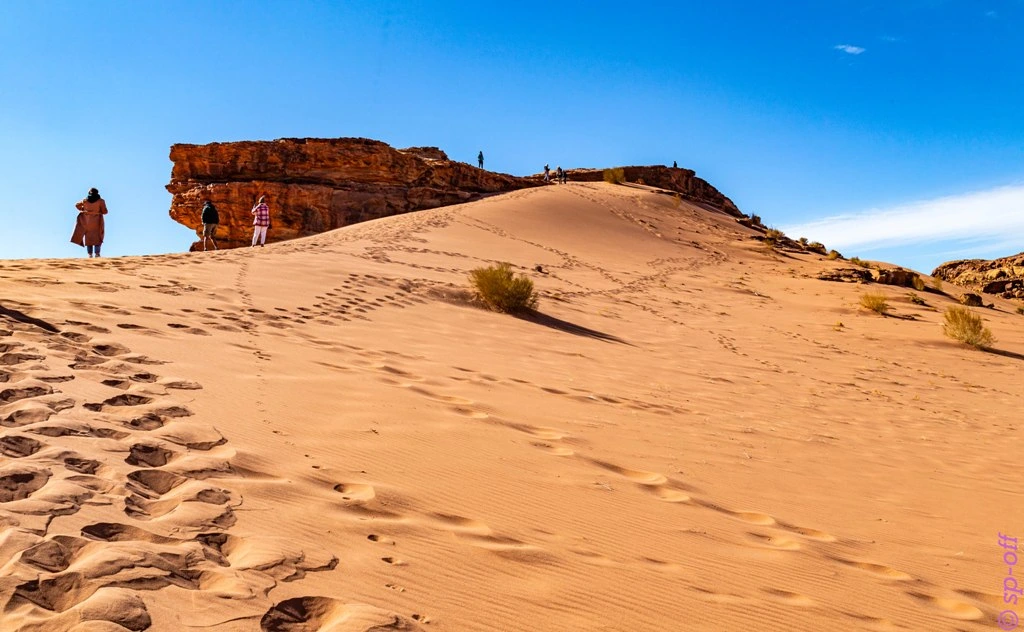
Throughout the Valley of the Moon, like a vast open-air museum, one can find an incredible collection of petroglyphs and inscriptions. Many of them are located on large boulders and cliffs along shepherd trails and water sources. In total, ancient people left us up to 25,000 petroglyphs and 20,000 inscriptions. The drawings depict hunting, warfare, appeals to gods, domestic and wild animals, some of which have since disappeared.
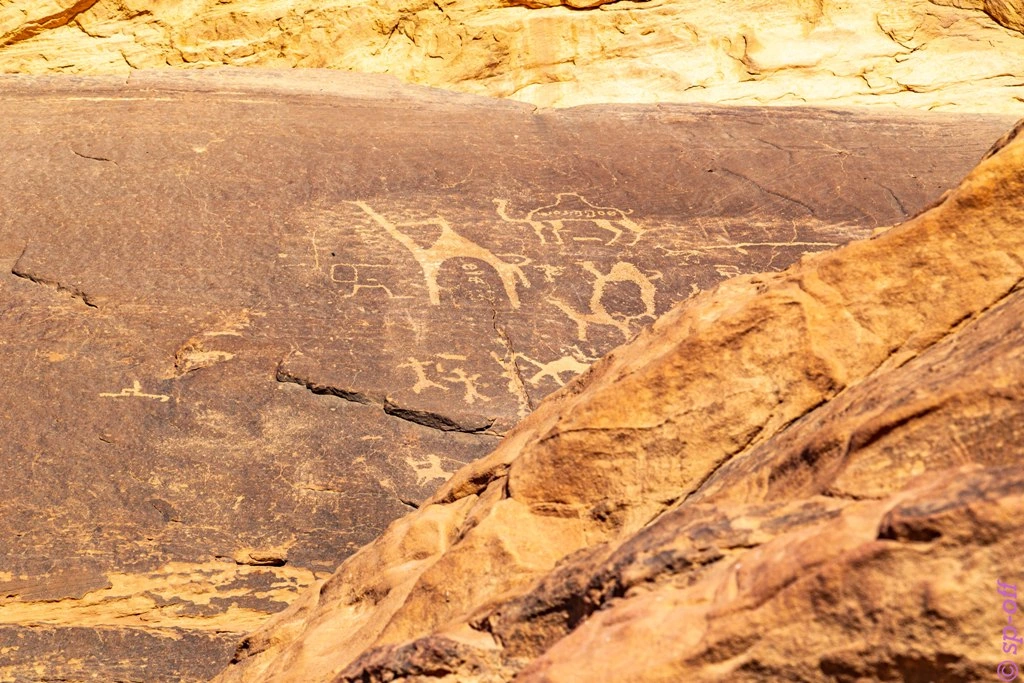
The inscriptions, in turn, indicate that various cultures inhabited Wadi Rum at different times. Written records were primarily left by the Thamud, ancestors of a tribe from modern Saudi Arabia. There are also inscriptions in the Nabataean alphabet, other pre-Arabic scripts, and Arabic. As for the content, scholars have deciphered simple signatures, religious appeals, and even love messages.
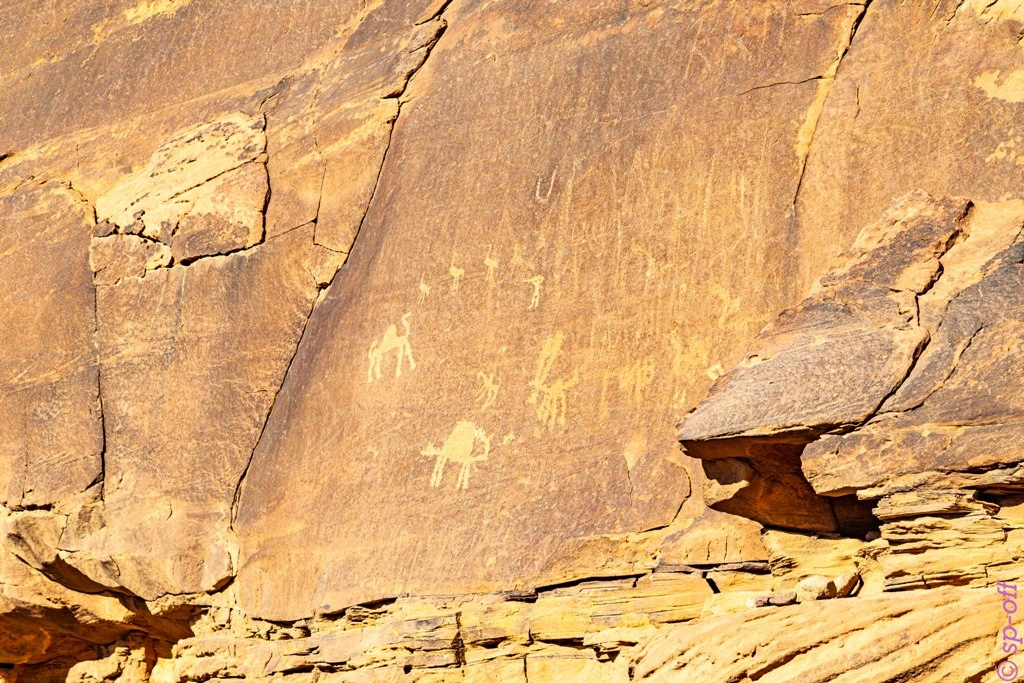
Humans settled in Wadi Rum as early as the Paleolithic era. The abundance of wildlife and sufficient water allowed ancient humans to sustain and grow their populations. During the Neolithic era, a nomadic lifestyle was replaced by a sedentary one. Agriculture and livestock farming took over from gathering and hunting. The land of Wadi Rum became one of the main living places for the Nabataeans outside Petra.
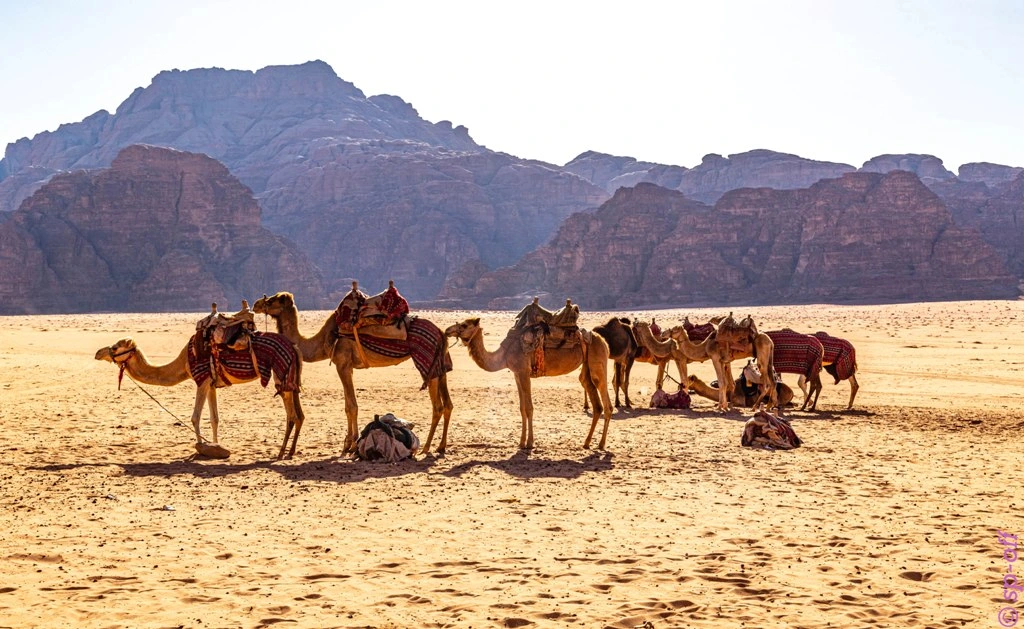
Like the famous rock city of Petra, the Wadi Rum desert preserves traces of Nabataean activity. Ancient wells, dams, and remnants of aqueducts—all of this has been preserved along former caravan routes and large settlement sites.
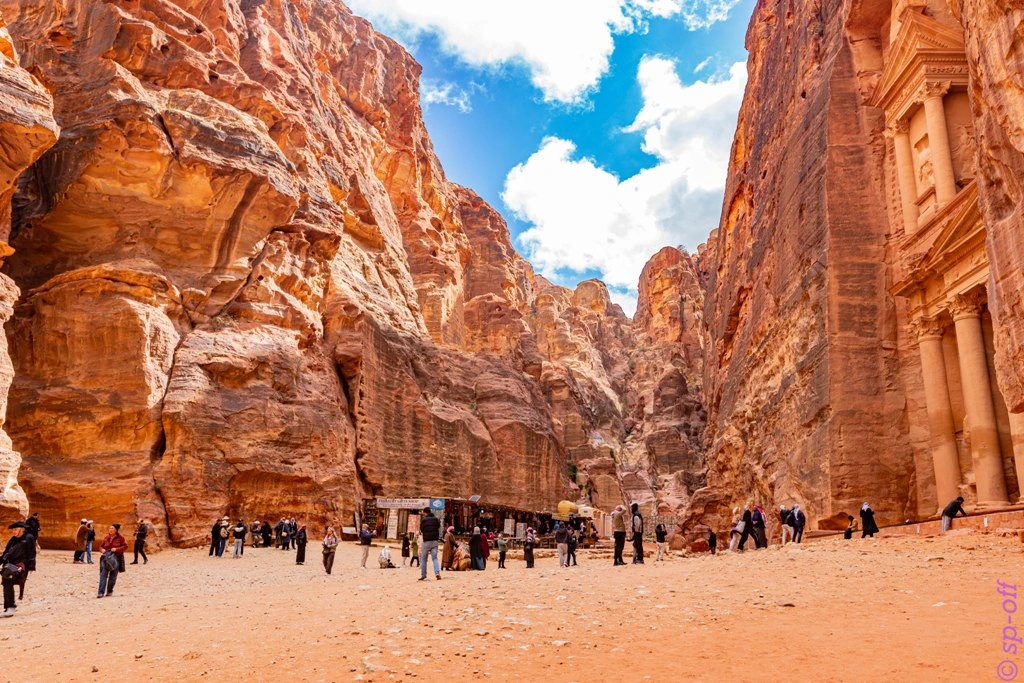
The unforgettable closing scene of the film «Indiana Jones and the Last Crusade» was filmed in Petra. This film significantly contributed to the popularization of this amazing place, which eventually, in 2007, was voted as one of the 7 Modern Wonders of the World.

Other parts of the film «Indiana Jones and the Last Crusade» were filmed across Jordan, including Umm Qais (an ancient Roman fort) and the Wadi Rum desert.
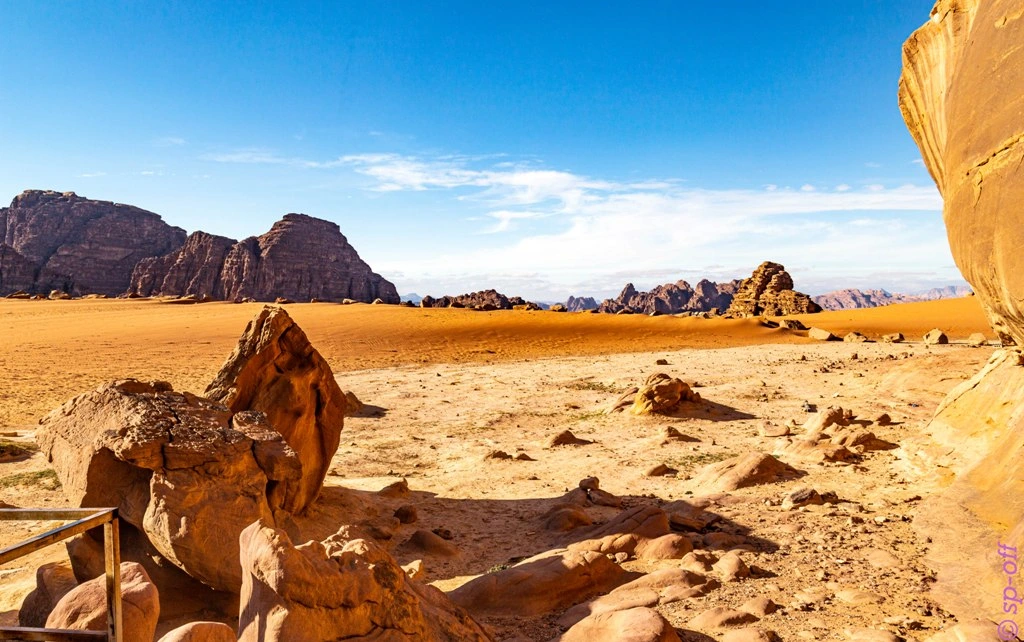
A section of Wadi Rum covering over 740 square kilometers, which is part of the Hisma Desert in southern Jordan, was designated as a natural and cultural site under protection in 2011.
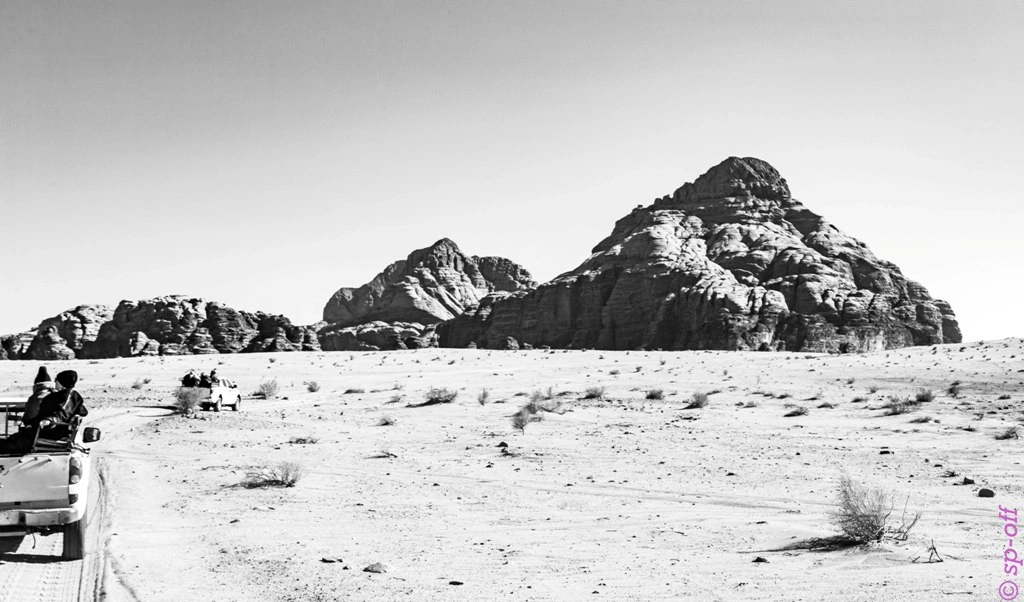
According to UNESCO, the Wadi Rum desert is «an important site for the study and understanding of the evolution of aesthetics, writing, and literacy».
Its uniqueness lies in the diversity of desert landscapes that nature has composed from narrow canyons, high monolithic cliffs, vast landslides, and caves.
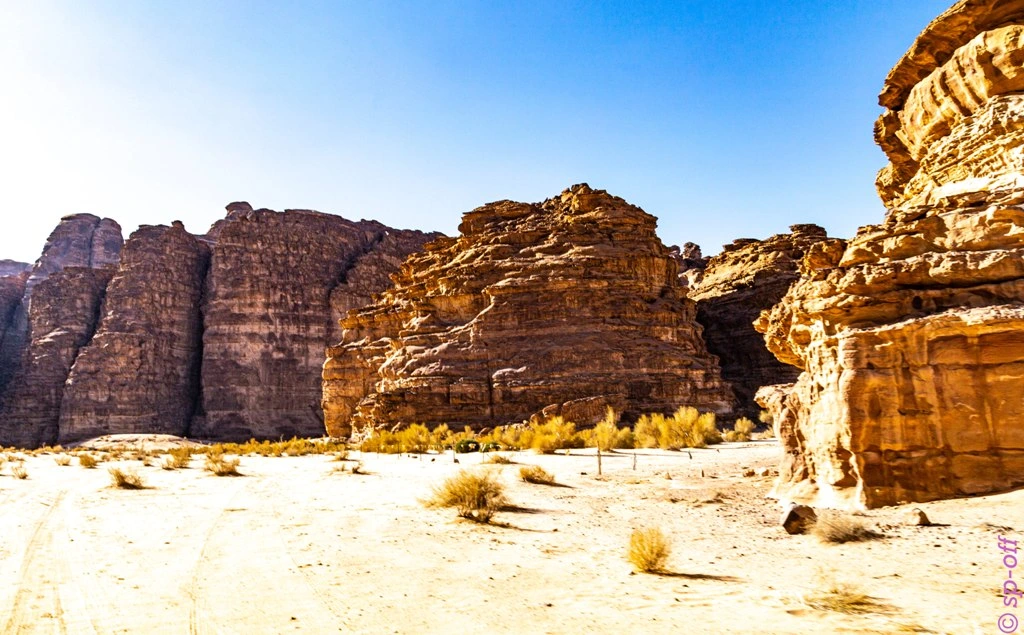
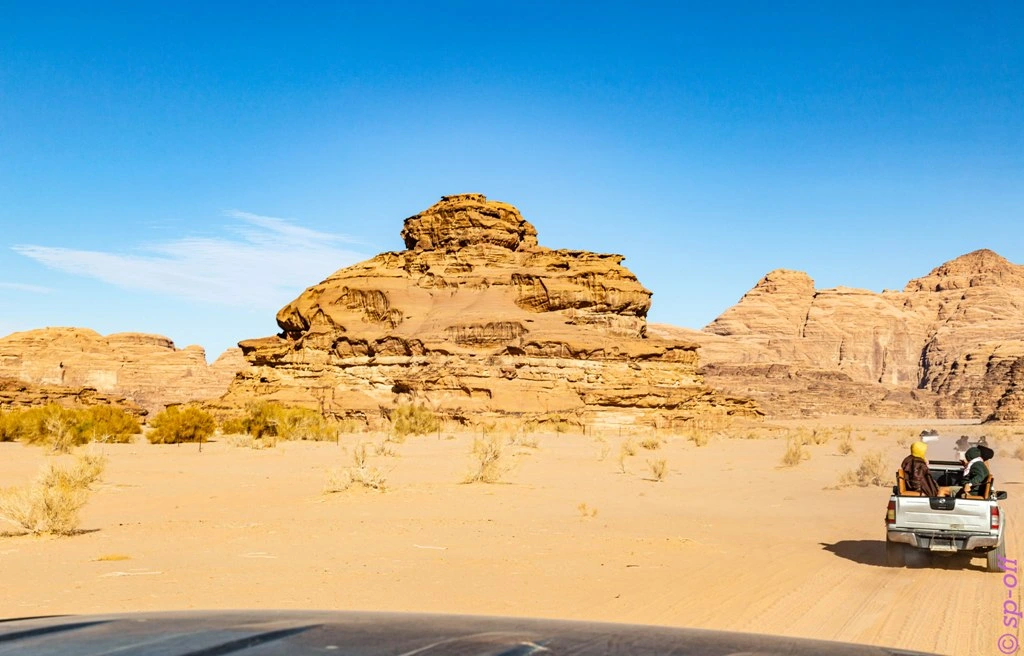
The history of these places is closely linked with the name of Lawrence of Arabia. A soldier, spy, writer, and diplomat, he played a significant role in uniting Arab tribes in the struggle for freedom from the rule of the Ottoman Empire. As a military advisor to Prince Faisal's headquarters, Lawrence participated in key confrontations during the Great Arab Revolt, including the capture of Aqaba and the Battle of Megiddo, which had a profound impact on their course. His success and popularity among locals earned him the nickname Lawrence of Arabia.
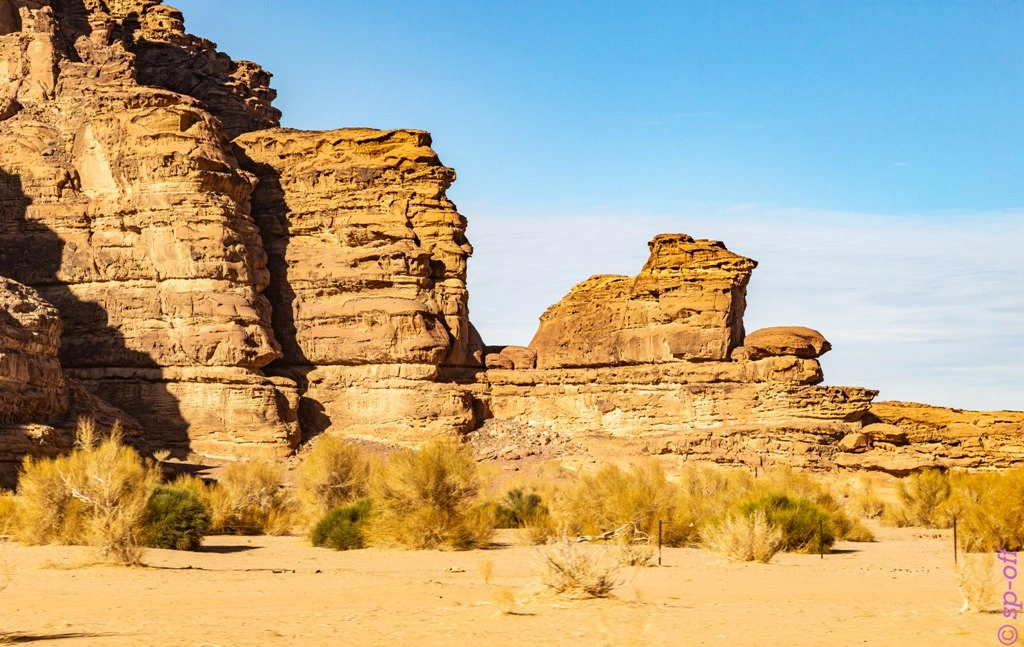
During World War I, Lawrence stopped in Wadi Rum several times. Returning to Britain, he mentioned this place in his famous autobiographical book «Seven Pillars of Wisdom». Among other things, he wrote: «».
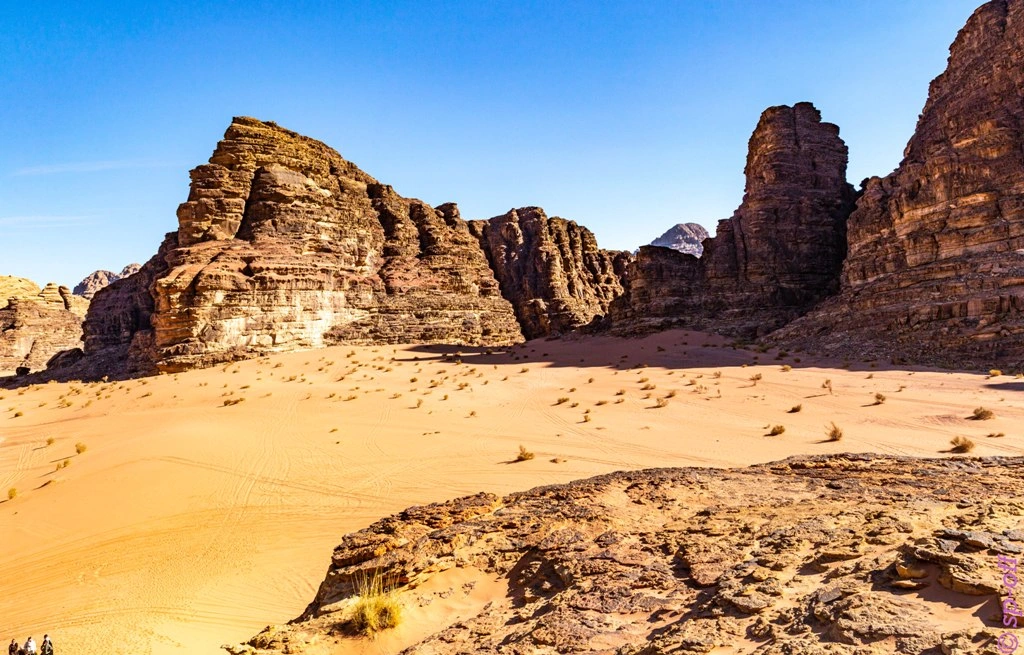
After the release of the 7-time Oscar-winning film «Lawrence of Arabia» by David Lean, shot in Wadi Rum in 1962, places related to the film's protagonist appeared in the desert.
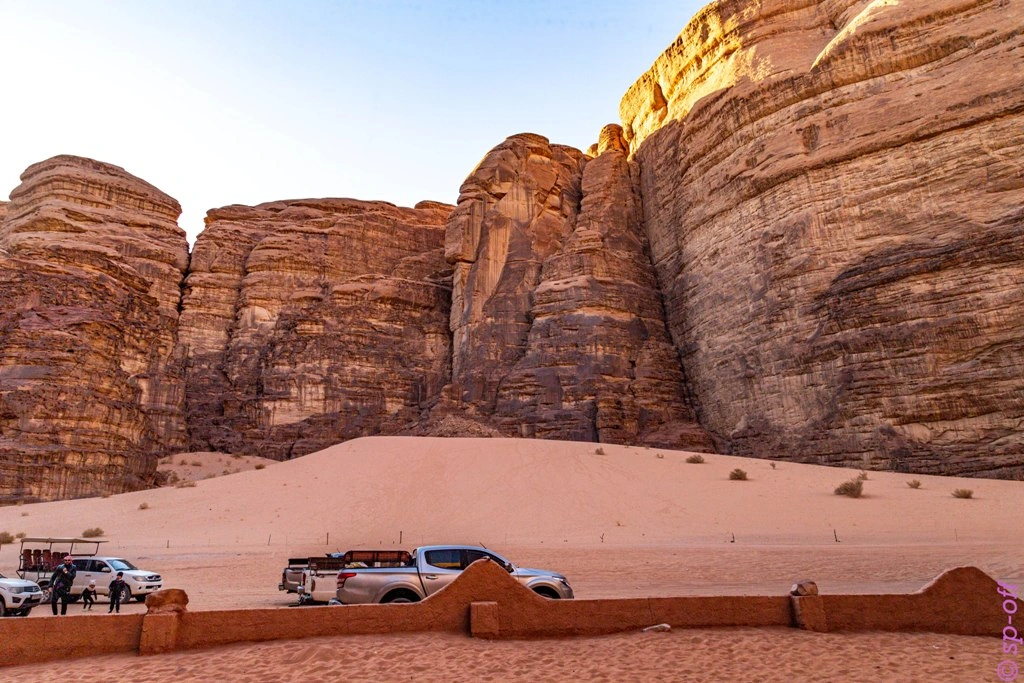
Today, tourists and guides have renamed several places in Wadi Rum, linking them to Lawrence of Arabia, although there is no reliable evidence of this person's presence in these locations.
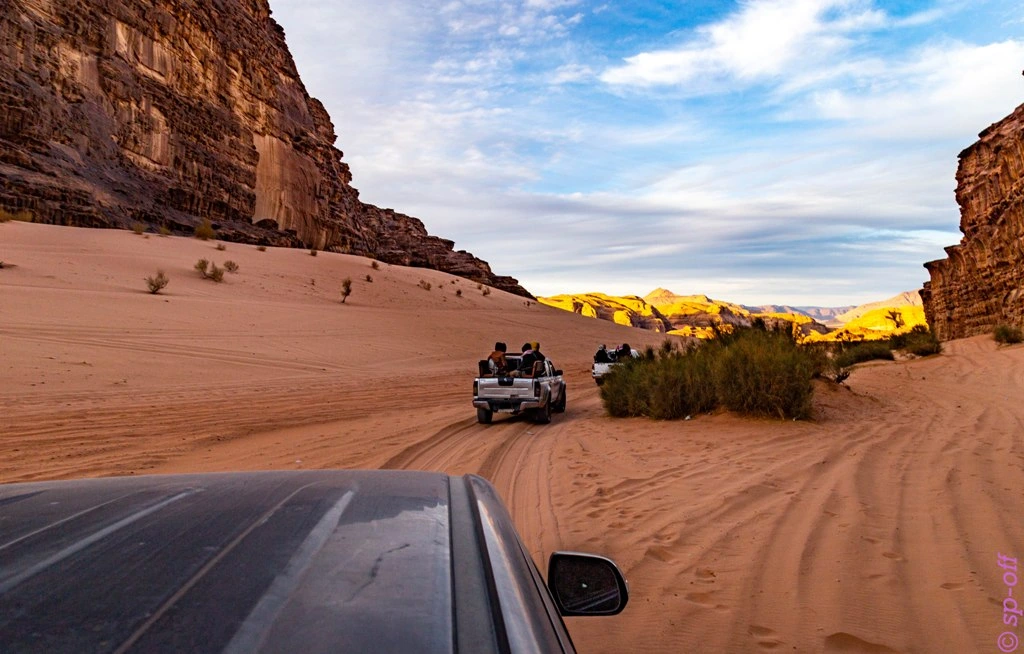
Sunset in the desert is a must-see part of any visit to Wadi Rum.
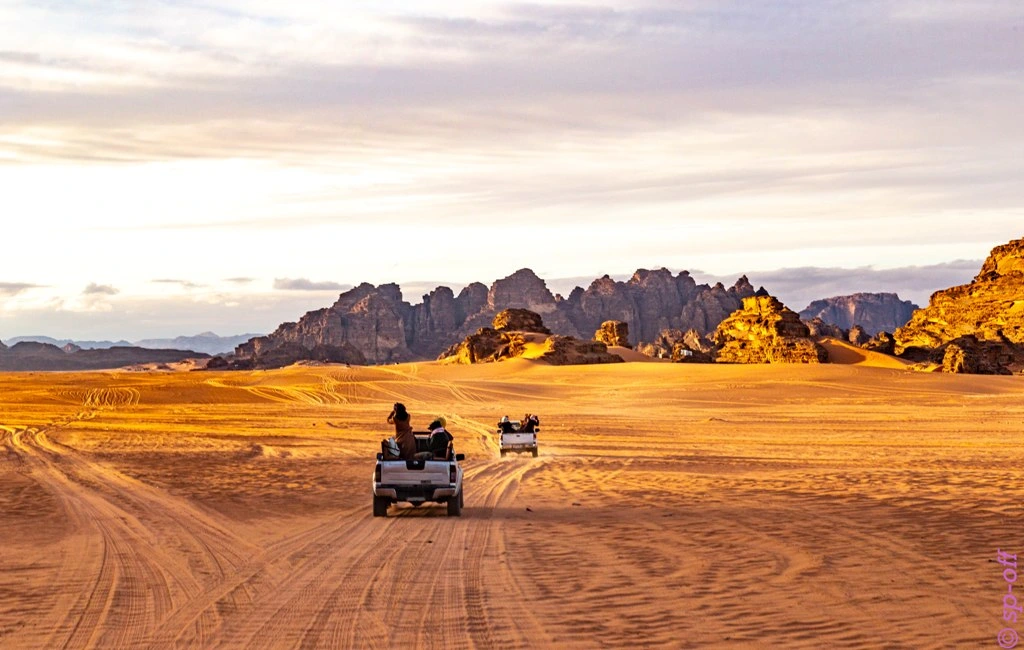
With the setting sun, the air temperature drops sharply, causing significant physical discomfort for many lightly dressed travelers.
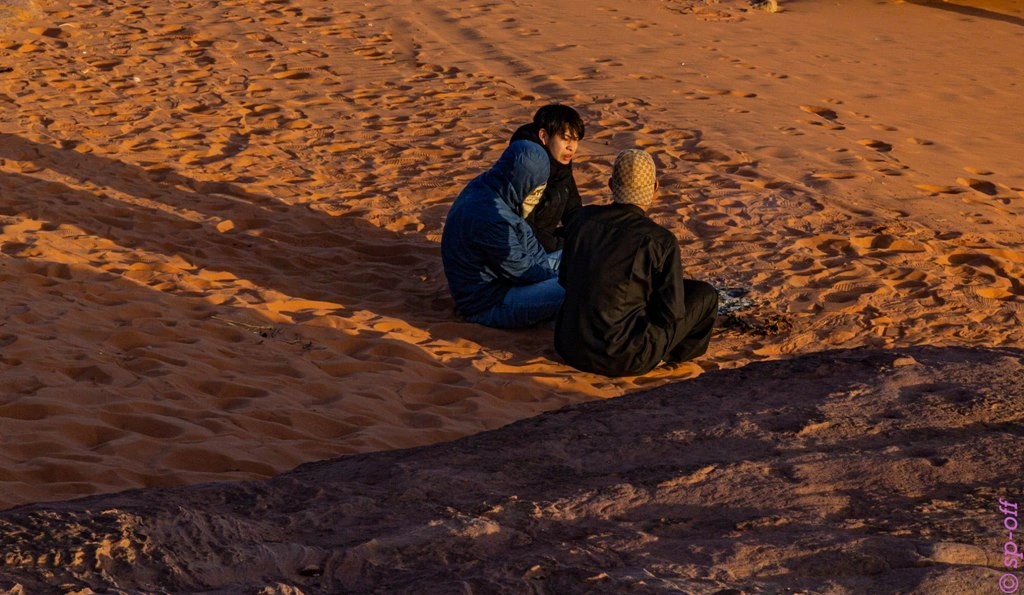
But the spectacle is worth it!
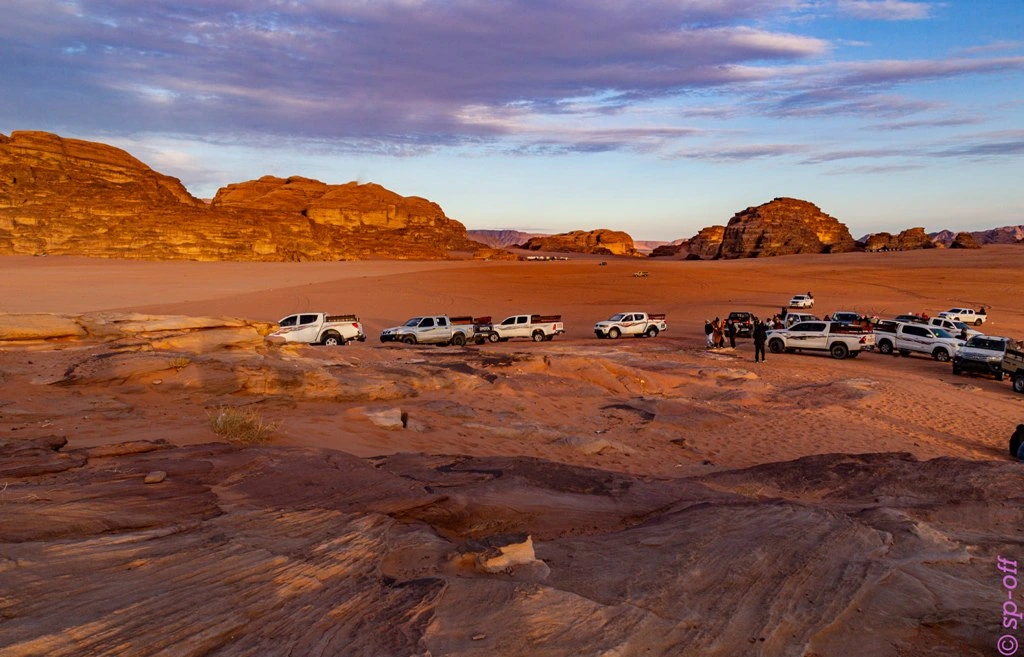
Additionally, it’s worth remembering that French director Denis Villeneuve shot several evening scenes of the planet Arrakis in the Wadi Rum desert.
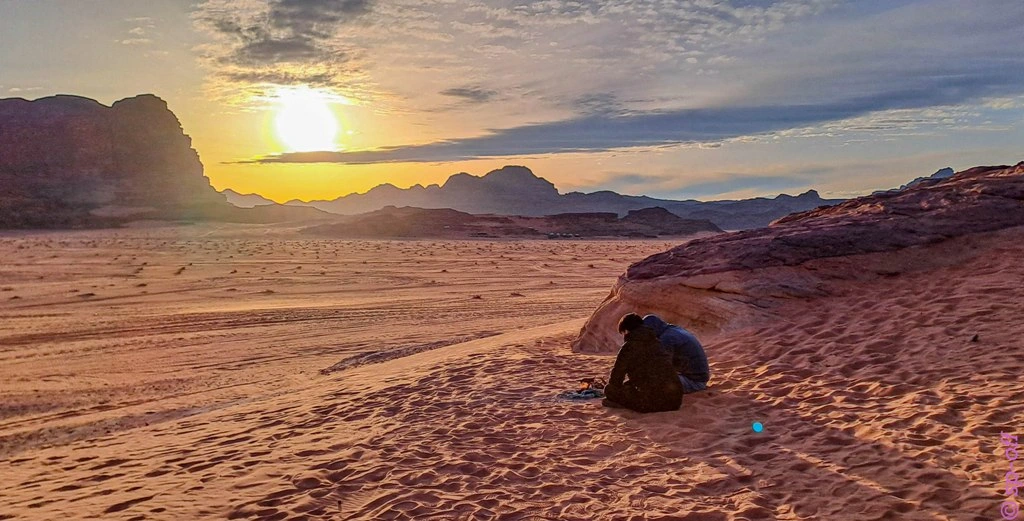
It’s important to clarify that the sandy landscapes of the planet from Frank Herbert’s science fiction novel were filmed in two deserts—the already mentioned Sahara, and the star of today's story.
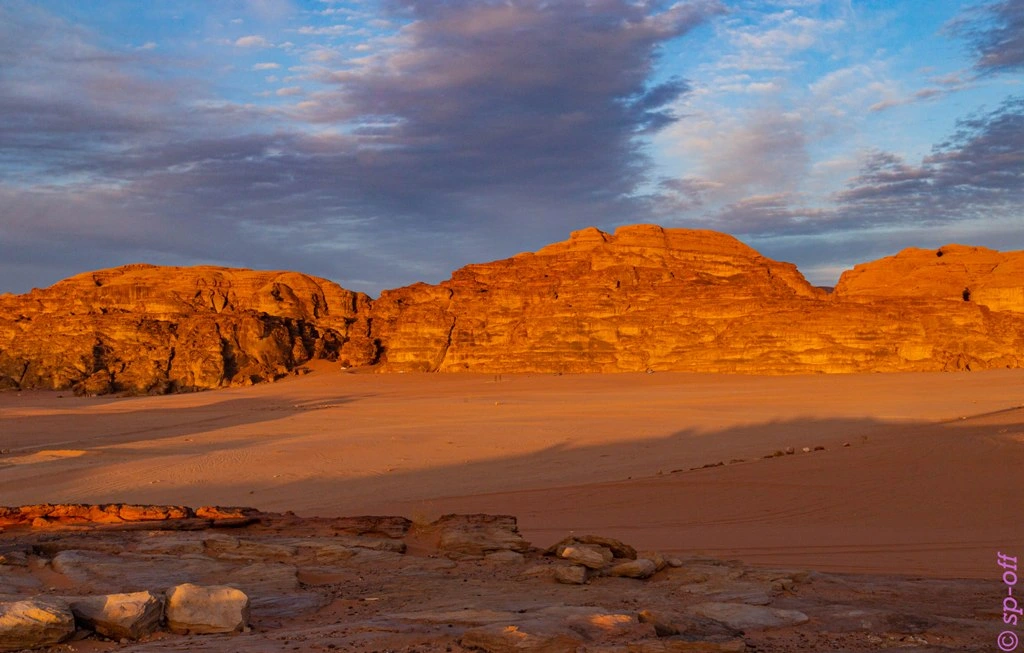
Wadi Rum, with its pink-hued sand, was the setting for the most romantic scenes of Timothée Chalamet and Zendaya’s characters in the second part of the blockbuster «Dune».
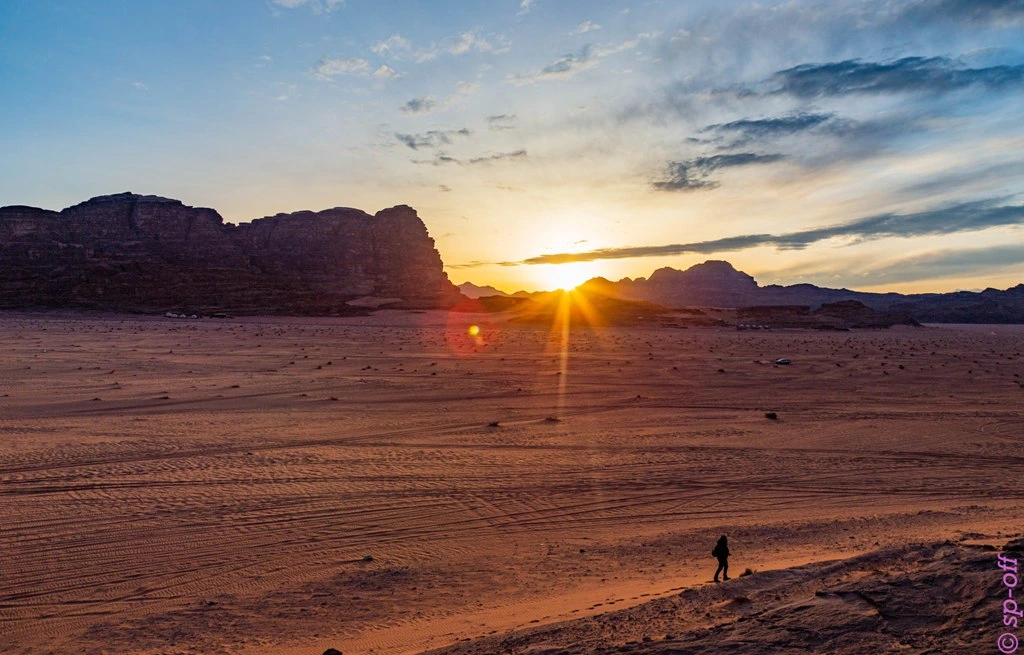
This is especially visible at sunset, during the so-called «golden hour»
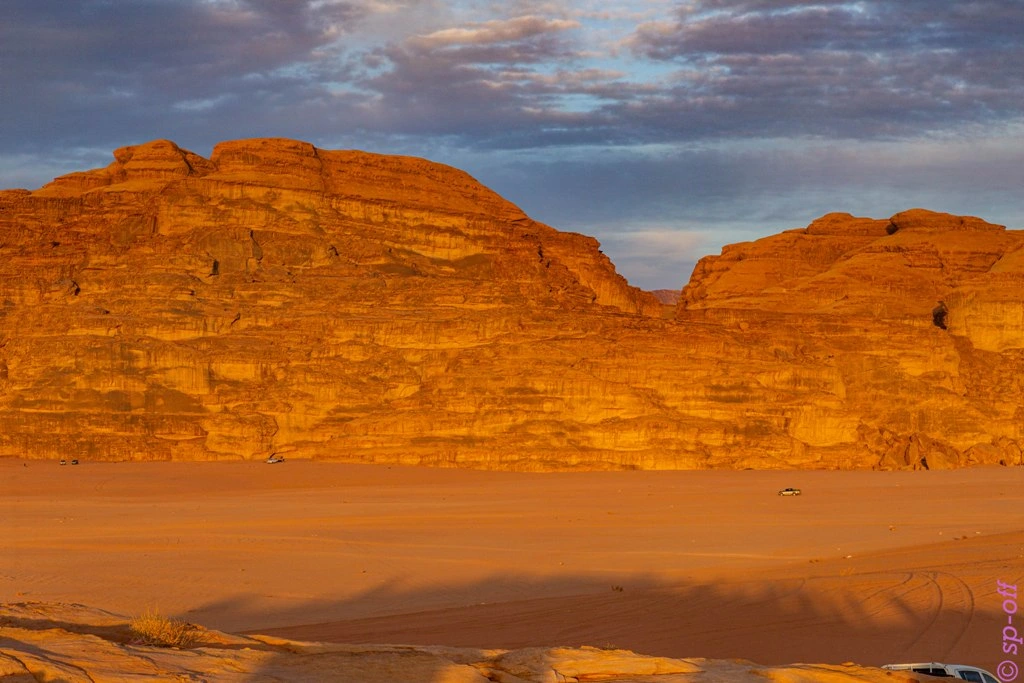
…and at dawn, when the sun is just rising over the mountains.
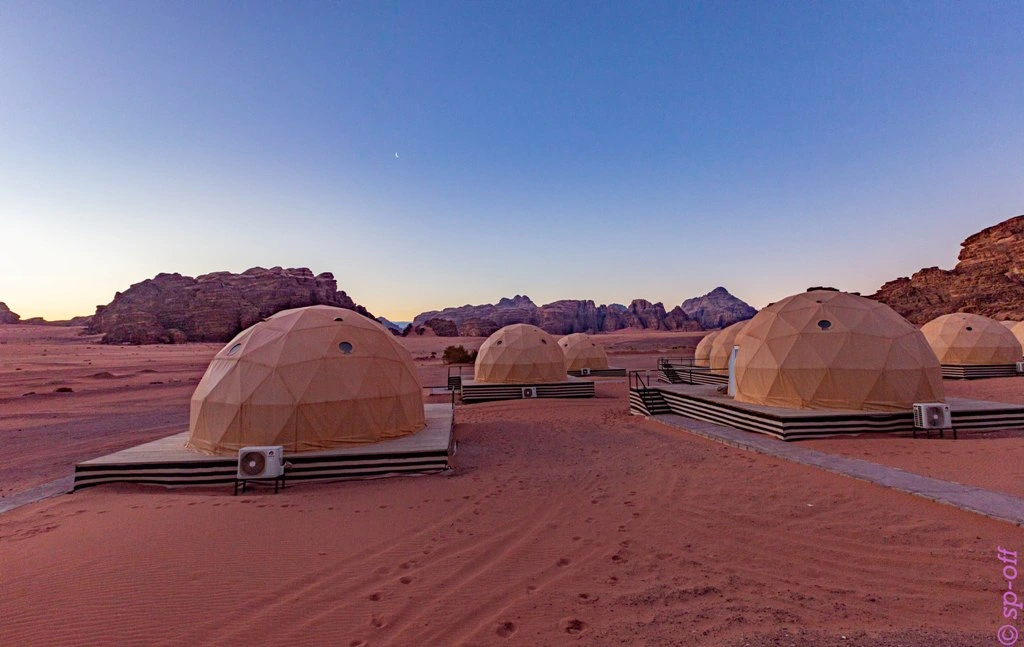
But this incredible spectacle is still ahead of us…
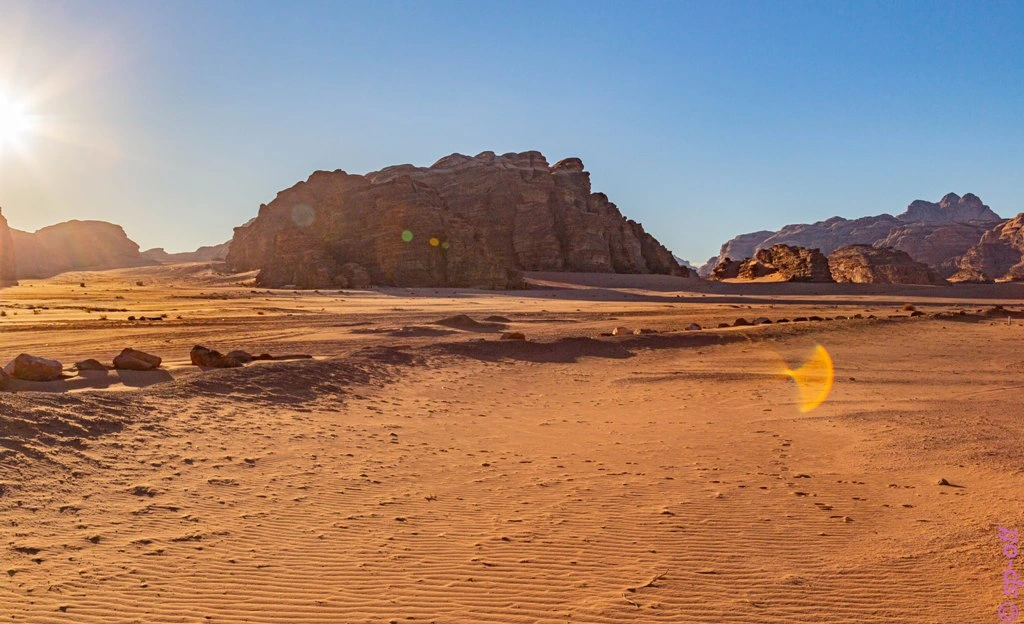
And at sunset, despite our warm coats,
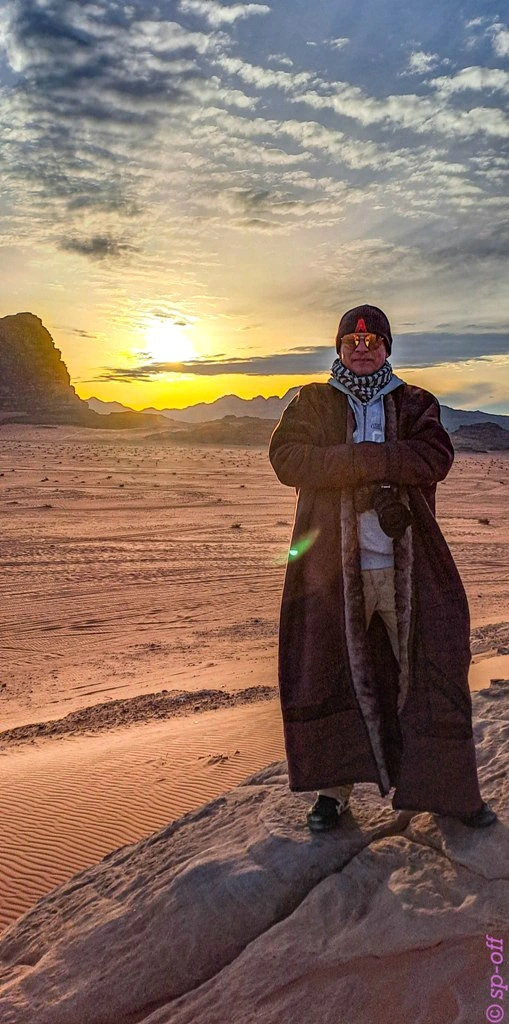
we shiver and watch as the sun trickles down below the horizon.
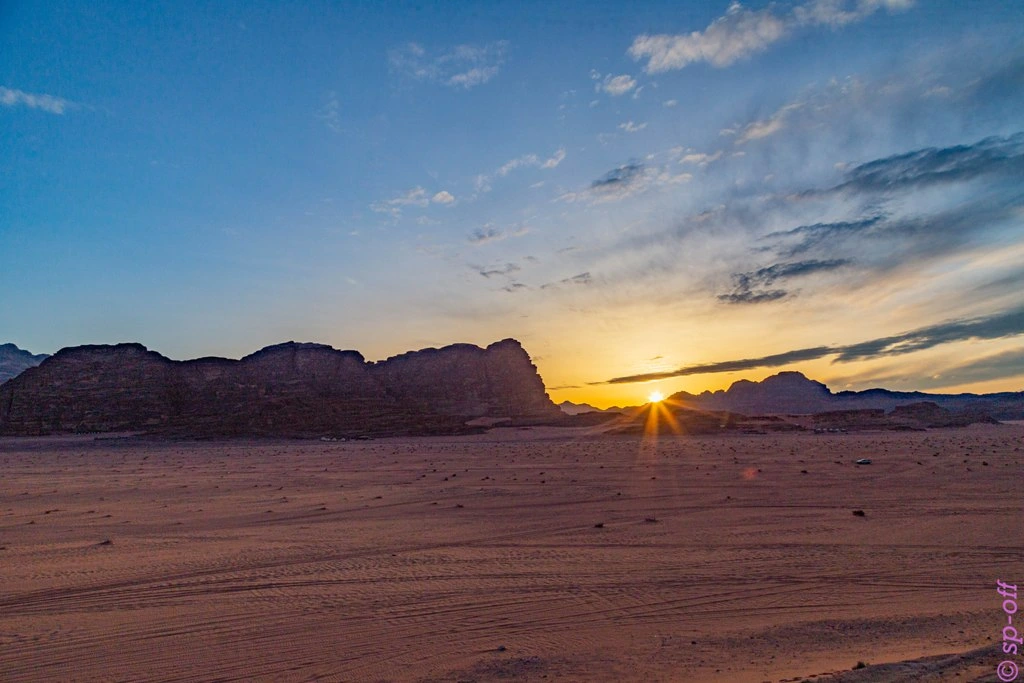
Well, that’s it!
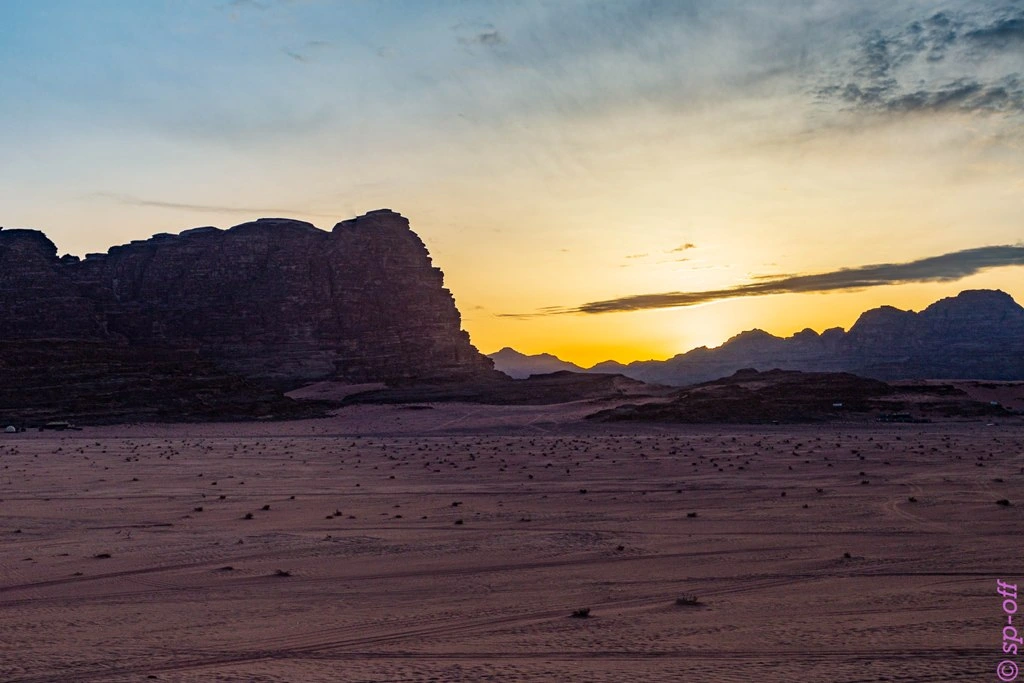
Now it’s time to head back to camp!
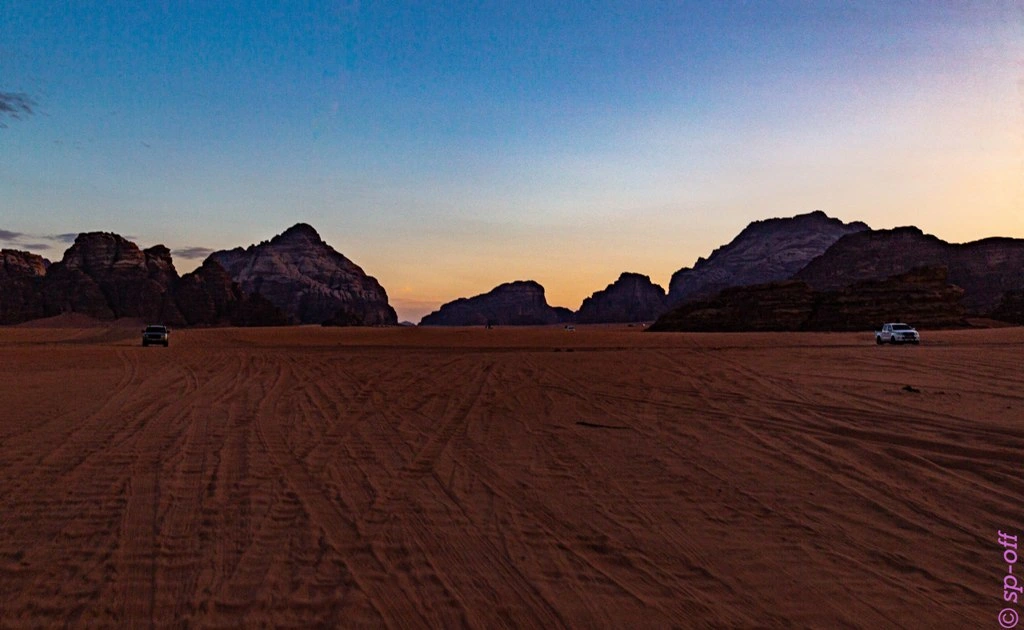
Where, in the morning, a pink dawn in a lunar Martian setting awaits us.
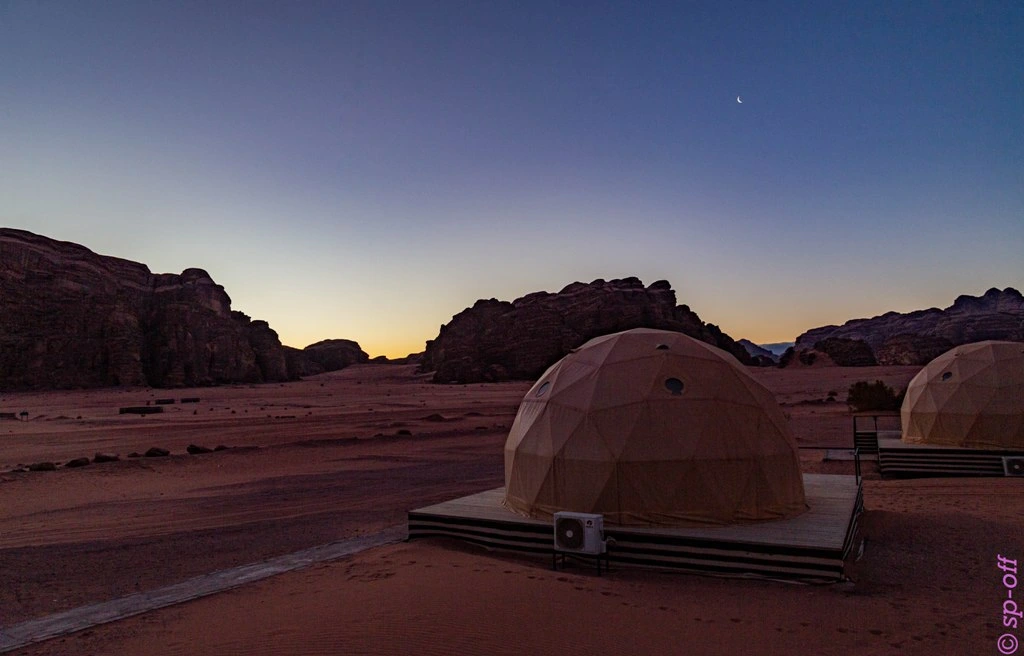
The next story about Jordan will be about the ancient city of Petra, which we had already visited by the time of this account.
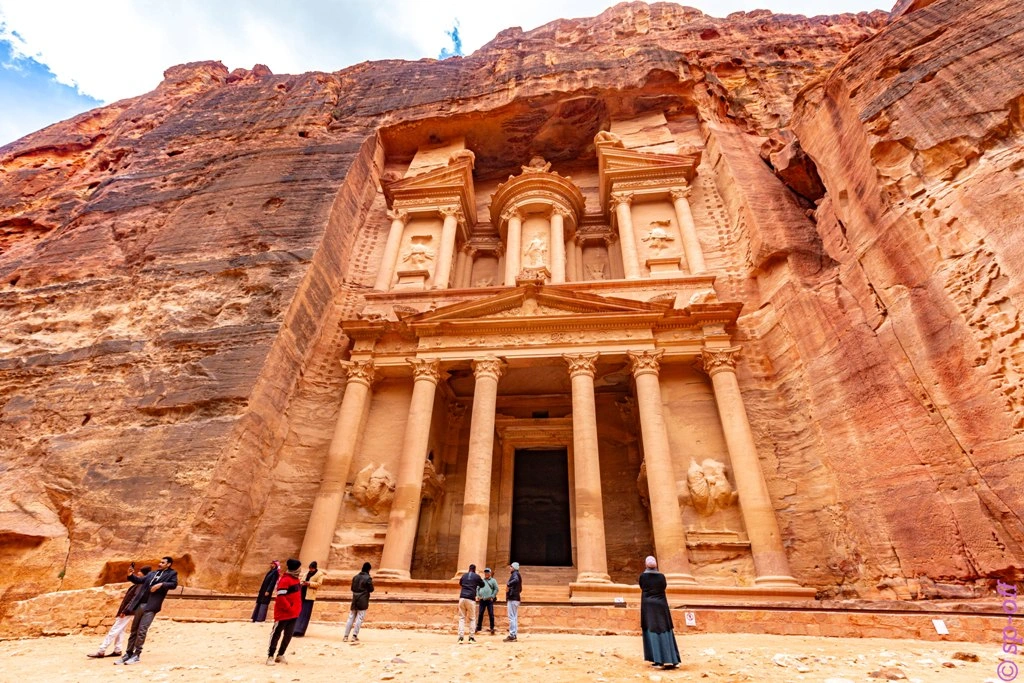
You can also read about Jordan: Armed raid on a train in the Wadi Rum desert
Petra – one of the seven modern Wonders of the World

